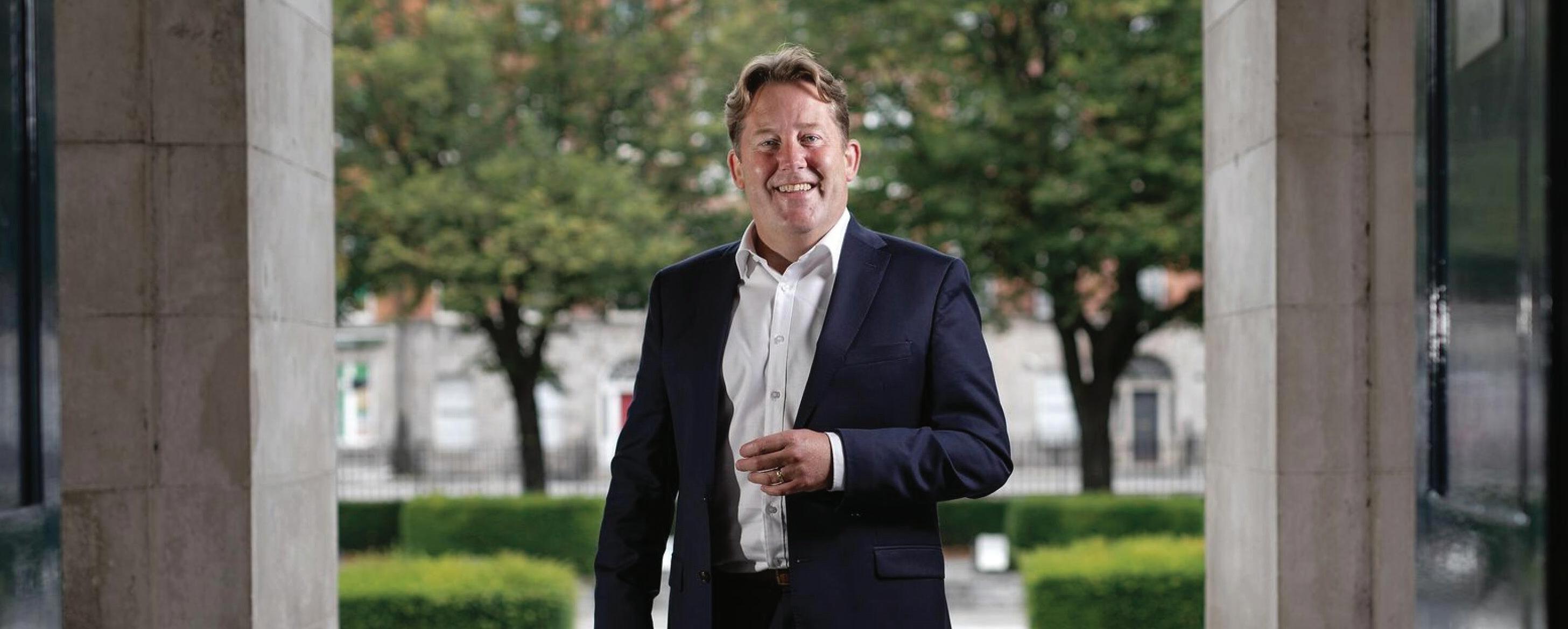
RESIDENTIAL CONSTRUCTION IN FOCUS

TURNER AND TOWNSEND IRELAND - Ireland’s Renewable Future

LAND DEVELOPMENT AGENCY - Cabinet Decision To Double Capitalisation Of LDA
M&N CIVIL ENGINEERING - Marks 20 Years Of Excellence And Innovation














TURNER AND TOWNSEND IRELAND - Ireland’s Renewable Future

LAND DEVELOPMENT AGENCY - Cabinet Decision To Double Capitalisation Of LDA
M&N CIVIL ENGINEERING - Marks 20 Years Of Excellence And Innovation














The Liebherr-XPower range of wheel loaders returns outstanding fuel efficiency. Scan QR code to find out what you could save with the Liebherr fuel efficiency calculator.





 L 556 | 9.91 I/h*
L 550 | 8.94 I/h*
L 576 | 12.85 I/h*
L 586 | 16.59 I/h*
L 566 | 12.21 I/h*
L 580 | 13.94 I/h*
* Figures taken on 01/06/22 are a guideline based on the actual average of the model’s global population in LiDAT and are subject to specific site conditions, materials, application and operator use. See how much you can save with Liebherr’s real-time fuel calculator.
L 556 | 9.91 I/h*
L 550 | 8.94 I/h*
L 576 | 12.85 I/h*
L 586 | 16.59 I/h*
L 566 | 12.21 I/h*
L 580 | 13.94 I/h*
* Figures taken on 01/06/22 are a guideline based on the actual average of the model’s global population in LiDAT and are subject to specific site conditions, materials, application and operator use. See how much you can save with Liebherr’s real-time fuel calculator.
CIVIL AND CONSTRUCTION IRELAND
Email: info@civilandconstruction.ie
Civil and Construction Ireland 2024
Welcome to our latest issue of Civil and Construction magazine. The housing sector has showed impressive resilience. Early months last year saw steady progress, with a significant spike in April. Despite a minor dip in August, the year picked up momentum again, with September witnessing an extraordinary boost in housing completions. The sector celebrated a 14.7% rise from the previous year, totalling 29,890 completed units, surpassing the governments target of 29,000. This achievement not only reflects a successful governmental policy but also brings much-needed relief to Irish households grappling with housing shortages.
However, this positive trend does not obscure the potential challenges ahead. Rising construction costs, labour shortages, and supply chain disruptions remain significant barriers to maintaining or increasing the current pace of housing completions. The government and industry stakeholders need to address these issues proactively to avoid potential setbacks in 2024. Moreover, market sentiment, while currently optimistic, could be affected by economic uncertainties, including inflation and potential shifts in policy. The focus should not only be on the quantity but also the quality and affordability of housing. Ensuring sustainable, energy-efficient homes that cater to a diverse range of income groups remains a critical area of focus. For more on housing developments and the housing market see inside for a more in depth look.
In the news recently Higher Education Minister Simon Harris has been allocated €750,000 to set up a scheme which seeks to attract Irish construction workers abroad home amid an ongoing shortage of workers in the sector. The scheme aims to bring back Irish involved in construction work in cities like London, New York, and Sydney where outreach programmes will be offered in efforts to attract them home. “We want to send a message to the Irish people who may have left because there weren’t jobs in construction in the past, there weren’t jobs when the economy crashed, that Ireland is a very different place now Ireland needs you to come home, that Ireland needs you to help build homes,”. You can read the full article inside this issue.
For all advertising and marketing queries, contact on email: info@civilandconstruction.ie
Graphic Design: Colin Brennan
Advertising Sales: darren@civilandconstruction.ie
Howden, the global insurance group, has announced that it has acquired Coversure Limited (trading as “Surety Bonds”), strengthening its Surety offering to clients in the Irish insurance market as it continues to make significant investments to accelerate its growth journey in Ireland. Established in 2012 by Colm McGrath and Jane Brady, Surety Bonds is the only specialist Surety broker in Ireland, providing several types of bonds and guarantees, but predominantly performance obligation bonds required for construction contracts. Surety Bonds is an owner-managed business with its head office in Carrick on Shannon Co. Leitrim. The Surety Bonds team will work closely with Howden Capital, Advisory and Placement’s Surety division, led by James Souter. You can read the full news about this inside. We congratulate the Surety Bonds team on this recent news.
We have a lot of insightful articles in this issue along with plenty of construction news and a great new pick-up review with the Volkswagen Amarok so flick forward for all of that great content. Enjoy the read.
Mark Kenny Editor Civil and Construction IrelandLatest news from the civil and construction industry.
Introducing the new Pipelife Integrity 600 IC Manhole & Chamber
Two
SURETY
Construction output in Ireland compared to other European countries
ENERGIA
Rachael O’Boyle: Energia’s innovator and women in stem advocate
Marking 20 years of excellence and innovation
Seven
– A new town with big
Leading with sustainable development

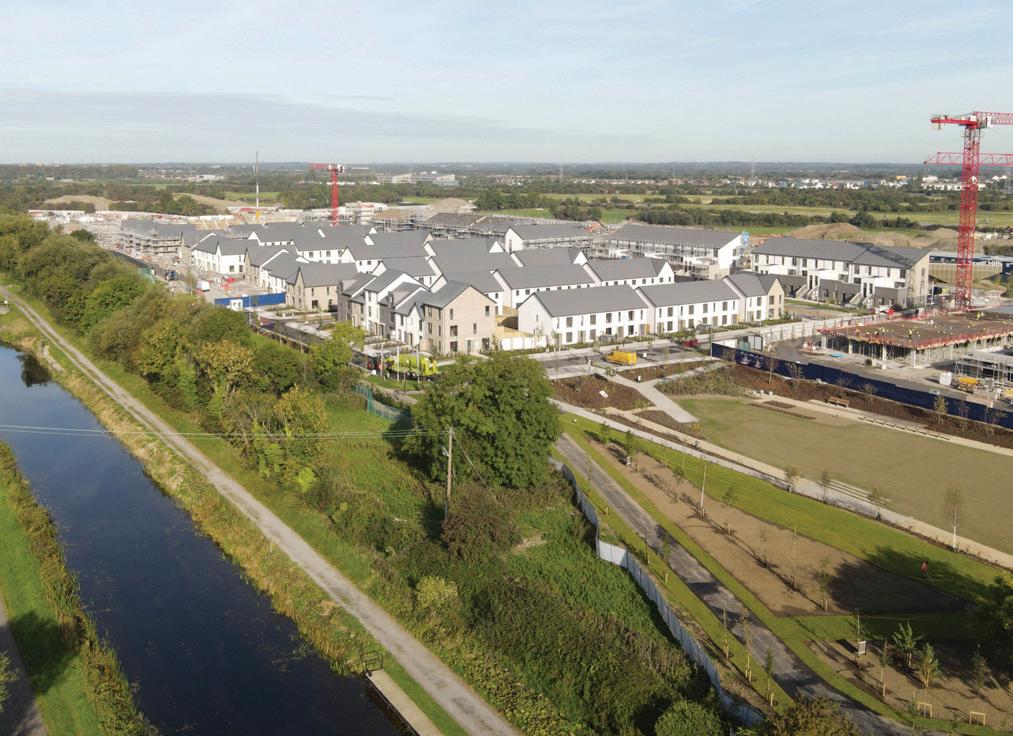

In conversation with Brian Davy,
at Turner & Townsend
A new Amarok model was well overdue, as the
version

Ahead of its annual Supply Chain Awards, Sisk carried out research with its suppliers, sub-contractors and manufacturers that indicates an upward trend in sustainability awareness and engagement in the construction sector with 59 percent of its suppliers having a net-zero and carbon reduction plan compared with just 52 percent in 2022.
PJ Hegarty is delighted to announce three appointments within its management team.
Maurice Killeen Appointed as Operations Director for the Southern Region
In his 30+ years’ experience since joining PJ Hegarty & Sons in 1993 as a Graduate Civil Engineer, Maurice has worked across a wide range of sectors within the industry, with a particular emphasis on large civil, industrial, pharmaceutical, and commercial projects. Maurice’s pro-active and structured approach to complex and challenging projects has contributed to a consistent track record of delivery for our clients, and lead to his appointment as a Regional Director in 2015 and Main Board Director in 2022. Maurice was appointed Operations Director for the Southern Region in 2024.
John Gavigan and Seamus Sheahan Step into Roles as Regional Directors for the Eastern Region
John Gavigan joined PJ Hegarty in 1996 and has consi-
stently demonstrated exceptional skill and leadership. Recognised with awards from CIOB and ICI, John advanced to Contracts Manager and was named Regional Director in 2023. His diverse project portfolio, including notable undertakings such as 10 Molesworth Street, Zoetis, and Tropical Fruit Warehouse, showcases his versatile and dynamic approach to construction management.
With over 28 years of industry experience, Seamus Sheahan joined PJ Hegarty as a Project Director in 2022. His expertise and wide-ranging industry knowledge span various sectors, from residential to microchip technology. Seamus’s appointment as a Regional Director in 2023 is a testament to his ability to manage large and complex projects, further strengthening PJ Hegarty’s leadership in the Eastern Region.




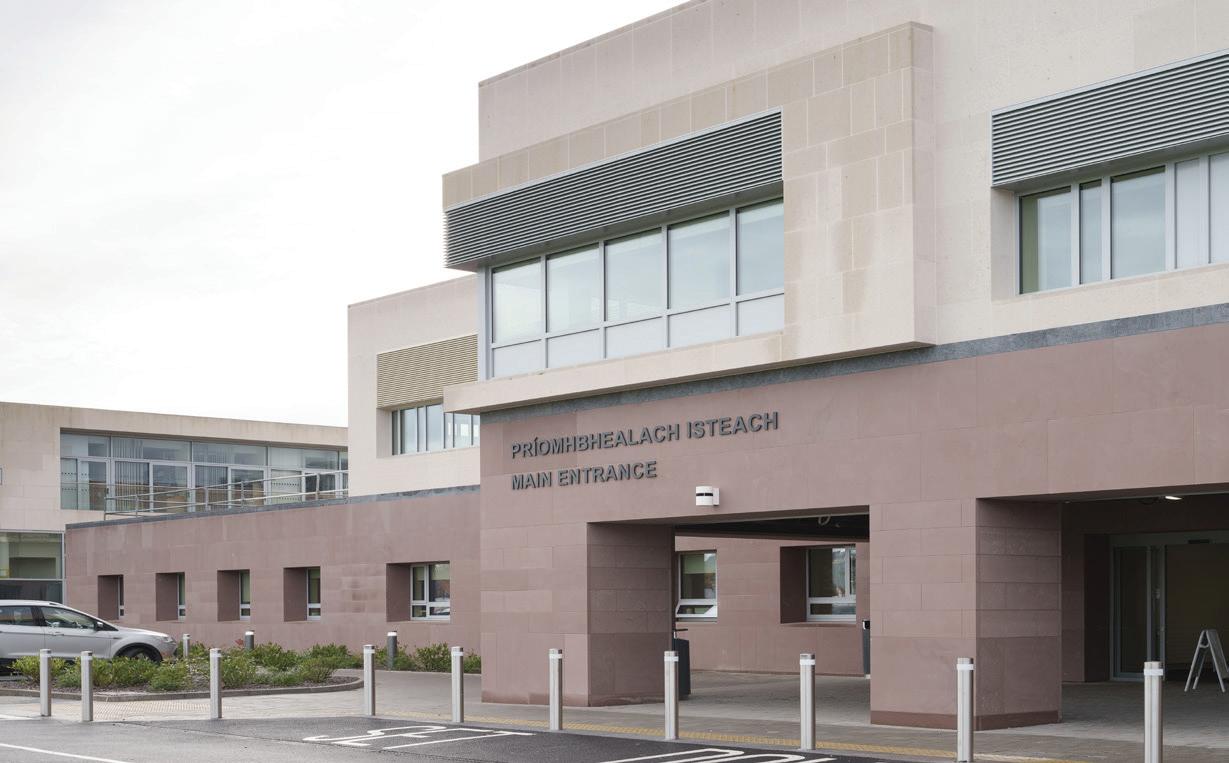






Howden, the global insurance group, has announced that it has acquired Coversure Limited (trading as “Surety Bonds”), strengthening its Surety offering to clients in the Irish insurance market as it continues to make significant investments to accelerate its growth journey in Ireland.
Established in 2012 by Colm McGrath and Jane Brady, Surety Bonds is the only specialist Surety broker in Ireland, providing several types of bonds and guarantees, but predominantly performance obligation bonds required for construction contracts. Surety Bonds is an owner-managed business with its head office in Carrick on Shannon Co. Leitrim. The Surety Bonds team will work closely with Howden Capital, Advisory and Placement’s Surety division, led by James Souter.
“I’m delighted to welcome Colm and his team to Howden. Surety Bonds provides a very specialised service to the Construction sector and this partnership allows us to expand our service offering for our clients. This is extremely exciting as the combined scale of Howden, our expertise
and our local office network will drive new business opportunities with both insurers and new construction clients. We are looking forward to working with James Souter and the wider Surety team to bring new solutions to the Irish market.” Robert Kennedy, CEO Howden Ireland.
“ Howden are the perfect strategic fit and more importantly a natural fit culturally for our business and our clients. This is a significant milestone for us today. Though we will continue to trade as Surety Bonds, becoming part of Howden allows us to better serve our clients with additional offerings bringing exciting growth opportunities.” Colm McGrath, Founder and Managing Director, Surety Bonds.
“Surety Bonds is a welcome addition to our portfolio. “Together, we have a greater combined scale which will enable us to service demand and improve our client offering in new areas. We’re excited to have Colm and his team join Howden, leveraging our collective power to provide outstanding solutions for our clients.” James Shouter, Head of Surety, Howden Capital Advisory and Placement.


Higher Education Minister Simon Harris has been allocated €750,000 to set up a scheme which seeks to attract Irish construction workers abroad home amid an ongoing shortage of workers in the sector.
The scheme aims to bring back Irish involved in construction work in cities like London, New York, and Sydney where outreach programmes will be offered in efforts to attract them home.
“We want to send a message to the Irish people who may have left because there weren’t jobs in construction in the past, there weren’t jobs when the economy crashed, that Ireland is a very different place now Ireland needs you to come home, that Ireland needs you to help build homes,”
“If you wish to come home, there are jobs here: well paid, reliable jobs,” he said.
While direct financial incentives will not be made available for Irish abroad the minister’s department is examining what could be done to make jobs in construction more attractive.
Minister Harris said that according to research conducted by the Department of Higher Education, some 50,000 extra construction workers across all trades were necessary in the next 10 years.
“We are currently revising those targets in line with the revised housing targets and an increased use of modern methods of construction but we will need more people to work here over the next number of years,” he said.
“That is why we are currently considering a number of measures to boost the labour market, including peer-to-peer campaigns for people aged 18 to 24 to show the value of careers in construction and working with guidance counsellors also.”
Commenting on the lack of women working in construction Harris said, “Representation, including visits to construction sites, could go a long way to address the gender stereotyping and prevalent fear among this cohort that construction is an inappropriate industry for women,”
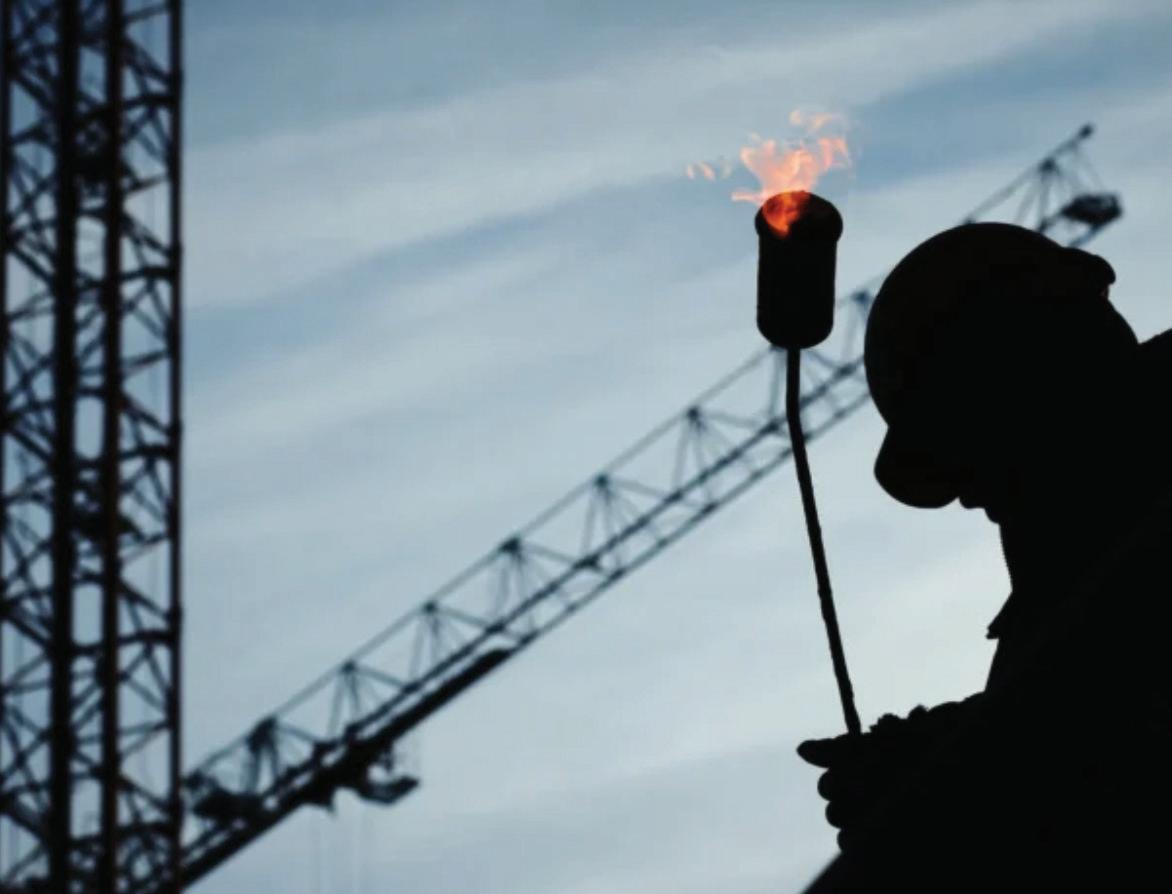



“Ireland is a great place to live and construction is a great career, this makes our recruitment message, as a purpose-driven and progressive contractor, particularly compelling right now”
Leading Irish building contractor flies the flag for Irish construction at St. Patrick’s Day celebrations in South Africa to attract senior construction professionals to help deliver on Ireland’s housing targets
Later this month a delegation from JJ Rhatigan & Company will embark on a six-day recruitment initiative in Cape Town, South Africa, focused on promoting opportunities for senior construction professionals in Ireland.
A steadfast presence in the construction sector over the past seven decades, JJ Rhatigan & Company, or JJR, has experienced a decade of steady growth and the team is currently working on 24 projects across Ireland and the UK with an aggregate value nearing €1.4 billion. The company’s impressive delivery over the past decade includes the delivery of more than 5,400 residential units in both Ireland and the UK, 17,000 school places, 20 healthcare facilities, 145,000m2 of office and commercial space, 2,500 student accommodation bedrooms, 1,400 hotel bedrooms, and 14 third-level campus facilities.
This trip is the company’s second construction recruitment initiative in South Africa, having successfully engaged with a previous government trade mission in 2023. On foot of connections interviews conducted and introductions made on that trip, over 10 senior construction professionals from South Africa relocated, together with their families, to Ireland to join the growing JJ Rhatigan team in both an operation and commercial capacity.
Speaking about the success of this initiative, Chief Executive Officer, Ger Ronayne, said:
“We are committed to building a better future through our projects and we have been delighted to welcome 11 new colleagues from South Africa to the JJR team in recent months. Each brings more than a decade of postgraduate industry experience, which is helping to deliver on our billion euro worth of projects on the ground. It is heartening to see how well our new teammates are settling into life in Ireland, together with their families. Ireland is a great place to live and construction is a great career, this
makes our recruitment message, as a purpose-driven and progressive contractor, particularly compelling right now.”
JJ Rhatigan & Company has strengthened its senior management team in recent years, demonstrating a strong commitment to diversity with 33 percent female representation. The company is also leading industry adoption of offsite and other modern methods of construction (MMC) to ensure accelerated programme delivery with the guarantee of consistently high-quality, sustainable outputs.
Looking ahead, Ger Ronayne, outlines:
“This marks our second venture to South Africa, with the aim of surpassing the success achieved during our inaugural trip last June. Our objective is to conduct second-round interviews with seasoned operations and commercial professionals from the country’s leading contractors. We are on track to double the number of contracts offered compared to our previous visit, which will increase our operational capacity further and allow us to deliver projects at greater scale”
During this upcoming visit, the JJ Rhatigan team will also have the honour of meeting with Darragh O’Brien, Ireland’s Minister for Housing, at the Irish Ambassador’s St. Patrick’s Day celebrations.
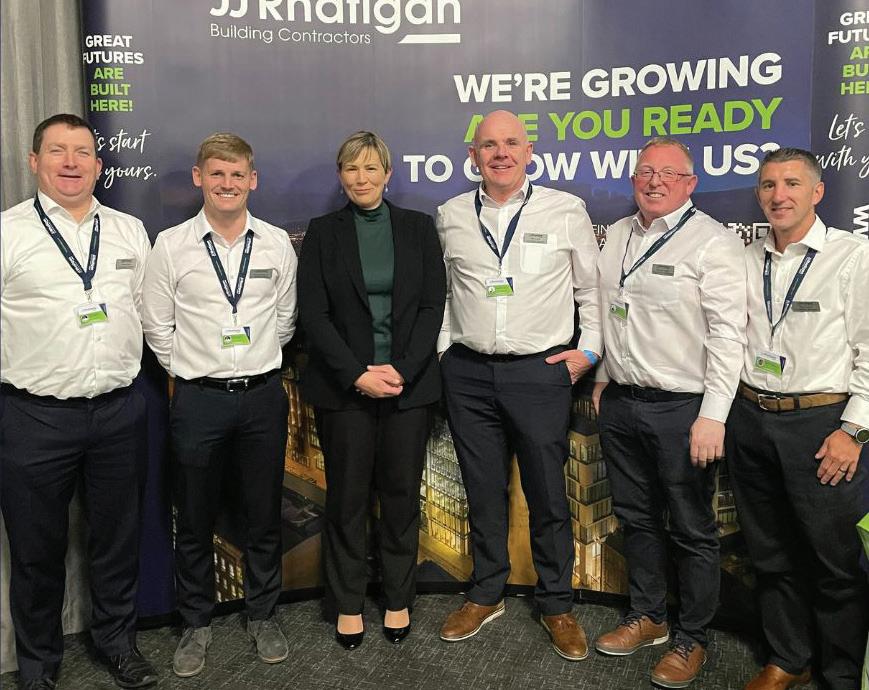





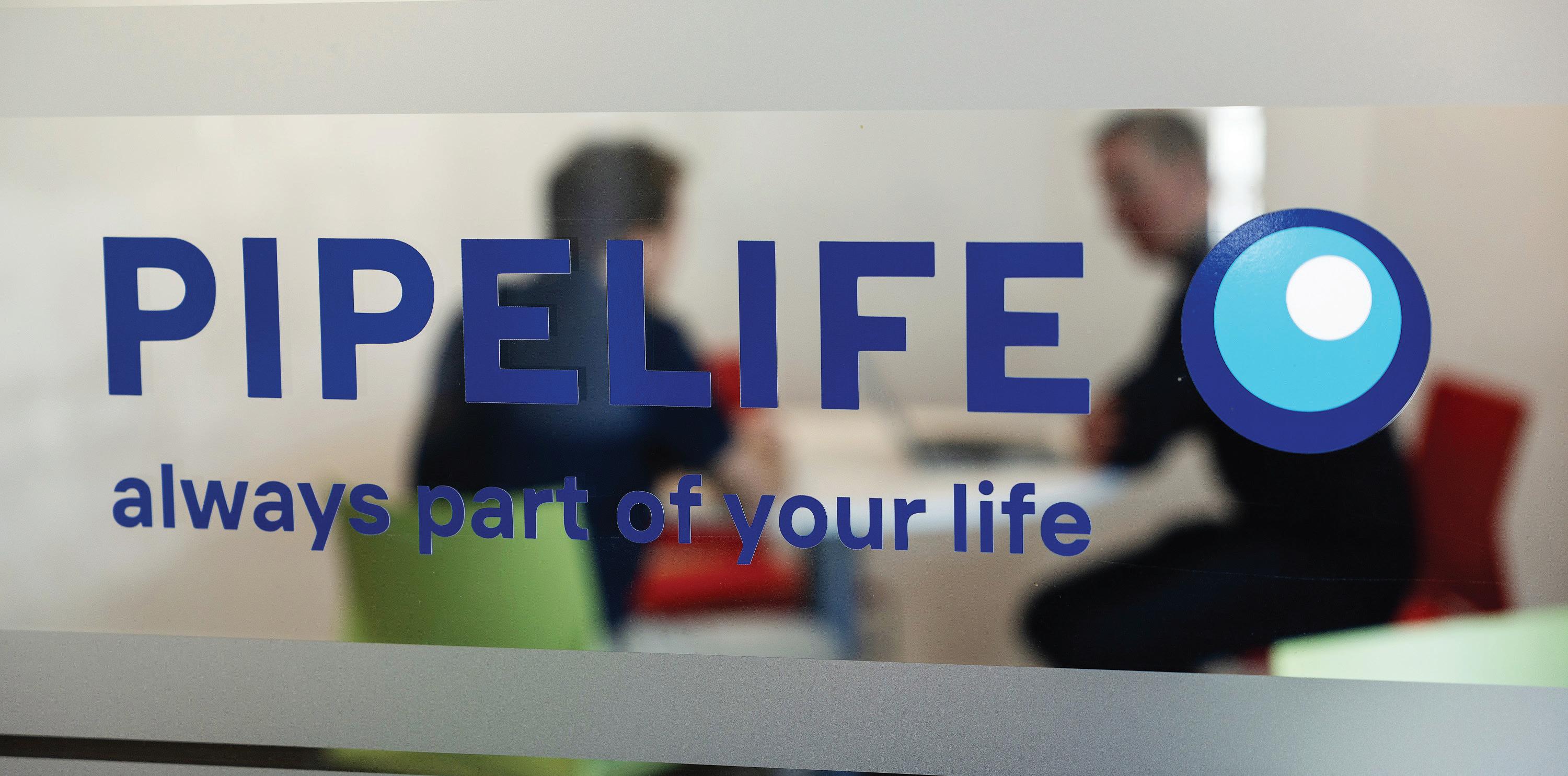
Pipelife develops, manufactures and distributes advanced PP, PVC and PE plastic pipe systems, something we have been doing under various names since 1947. Today, as Pipelife, part of the global Wienerberger building materials group, we are one of Europe’s largest manufacturers of lightweight yet strong solutions for the complete water cycle, for energy and power distribution, for telecommunication networks and for industrial applications.
Now, in 2023, we are delighted to present the latest and most innovative iteration of our continuous development processes: the Pipelife Integrity 600 IC Manhole & Chamber. This long-life system is the result of our dedication to learning from experience, monitoring climate and talking with customers to continually advance the design of our chamber systems. We are also looking for ways to speed up installation and improve overall integration across the entire pipeline system and the Integrity certainly delivers on this front.
The New Pipelife Integrity manholes and chambers offer strength, durability and resistance to abrasion and high
temperatures, ensuring a reliable long service life. Thanks to their lightweight material they are very easy to install without the use of heavy machines, and provide an ideal solution for sewage and stormwater applications in various ground and water conditions.
Our Pipelife Integrity manholes offer a wide range of connections to the base and riser rings. In practice, engineers can design their ideal manhole without being constrained by standard inlet-angle configurations. Water tightness is also guaranteed with rubber sealing rings, even if groundwater levels are higher.
Every element of the new Integrity system has been designed with the very best 21st-century technology that promotes long-lasting and easy use. By prioritising this functional and high-quality technology, our manholes and chambers are built to resist, adapt, flow and last and we expect each system to provide at least 50 years of reliable service as a result. The technology used fulfils all of the requirements set out in the applicable European standards.
Our New Pipelife Integrity manholes and chambers offer strength, durability and resistance to abrasion and high temperatures, ensuring a reliable long service life. Thanks to their lightweight material they are very easy to install without the use of heavy machines, and provide an ideal solution for sewage and stormwater applications in various ground and water conditions.
Our Pipelife Integrity manholes offer a wide range of connections to the base and riser rings. In practice, engineers can design their ideal manhole. Water tightness is also guaranteed with rubber sealing rings, even if groundwater levels are higher.



FLEXIBLE & WATER TIGHT INSTALLATIONS
SYSTEM-BASED
EASY HANDLING
FAST INSTALLATION

LIFETIME 50+ YEARS
Manufactured to EN 13598 standard
EXTREMELY ROBUST


NO SCALING OR EROSION
100% RECYCLABLE






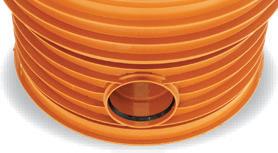
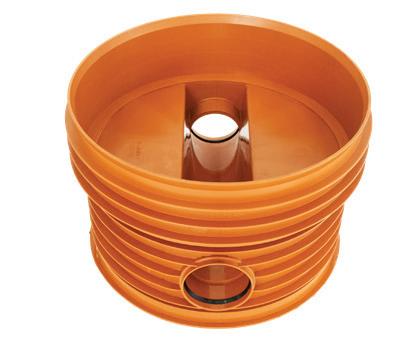
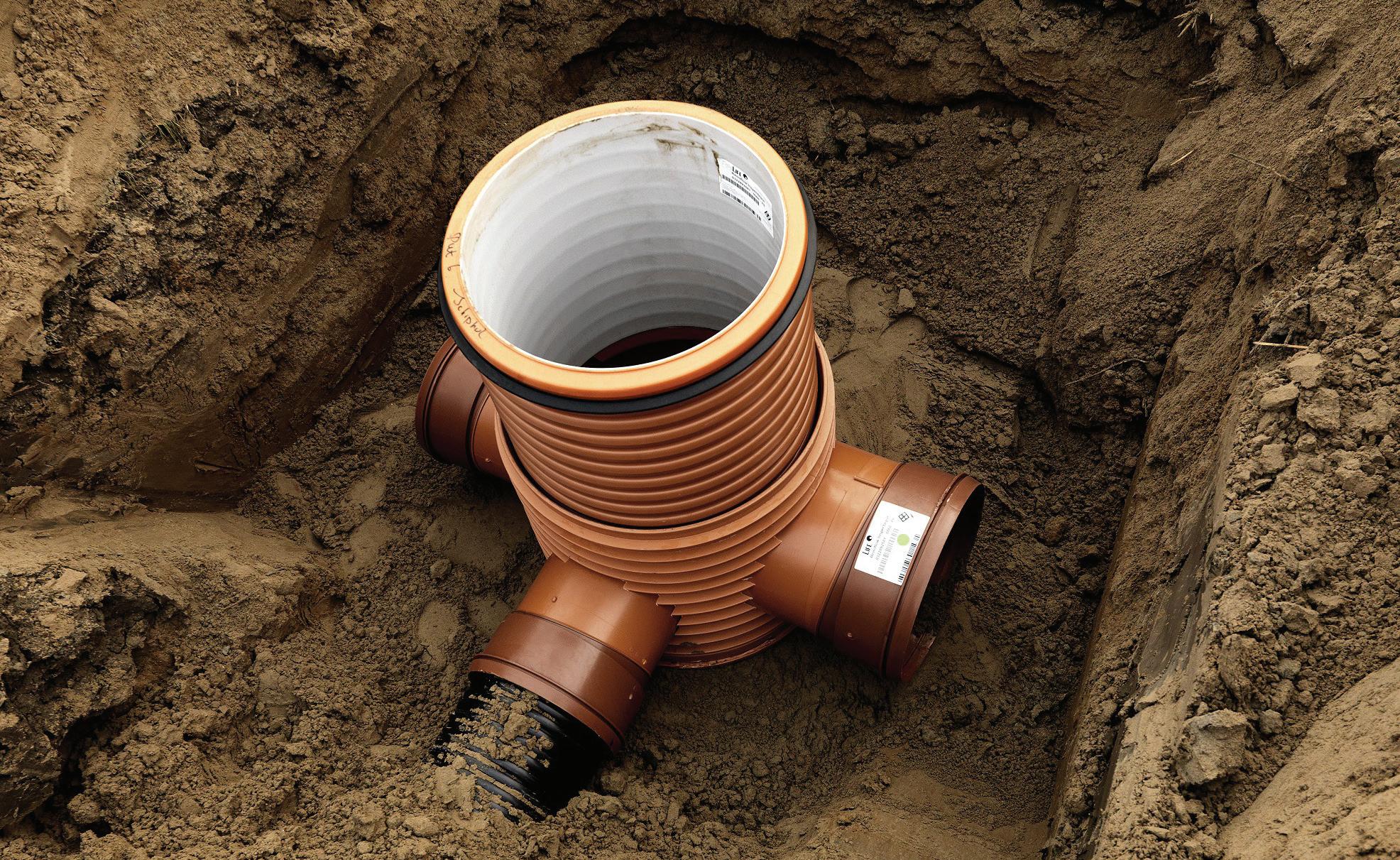
All Pipelife Integrity chambers and manholes are produced in an integrated, in-house production process. Because we develop and manufacture all the main elements ourselves, we can guarantee their compatibility with other Pipelife products as well as third-party ones. This unified, nocompromise approach to meeting requirements allows us to create functional, high-quality components with clear and reliable features. This is backed by excellent service, knowledgeable staff and readily available stock.
Our new and innovative product is typically ideal for the following list of uses:
• Sewage revision and inspection
• Connecting sewers on different levels
• Changing the direction of the sewer path (horizontally and vertically)
• Changing the slope and vertical section of a sewer pipe
• Draw tanks for sewage pumping station
• Energy reduction
• Water meter manholes
• Revision and inspection of telecommunication and power networks
• Industrial-specific needs
Please note that all of our inspection chambers can be tailored to specific needs. Don’t hesitate to get in touch with our expert team if you have any questions about your desired use.
Just like our products, when it comes to support and service, we think system-wide as well. Our R&D team have focused on customer needs as much as blue-sky thinking to ensure that our Integrity system can reach your stockyard in no time. We make life easier by always delivering our PRO manholes as a set and, as they are so lightweight, they are fast and simple to install when they do reach you.
If you’re keen to find out more about our latest technology and embrace the benefits of the Integrity system, simply call us on 021 488 4700 or email us at ireland@pipelife. com

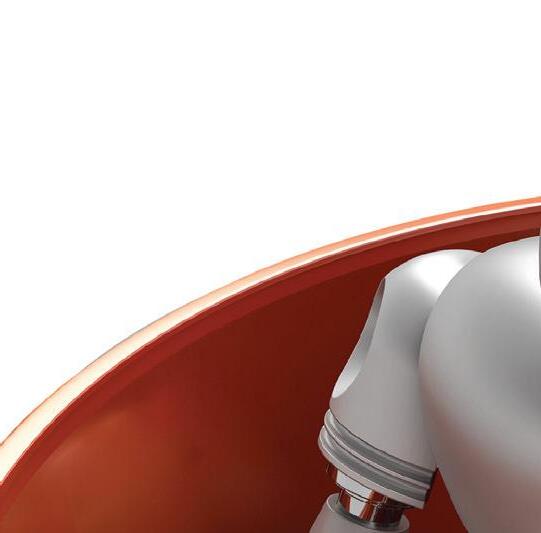

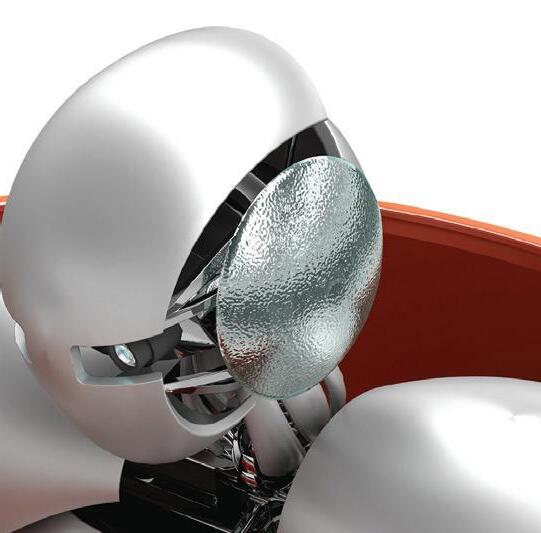

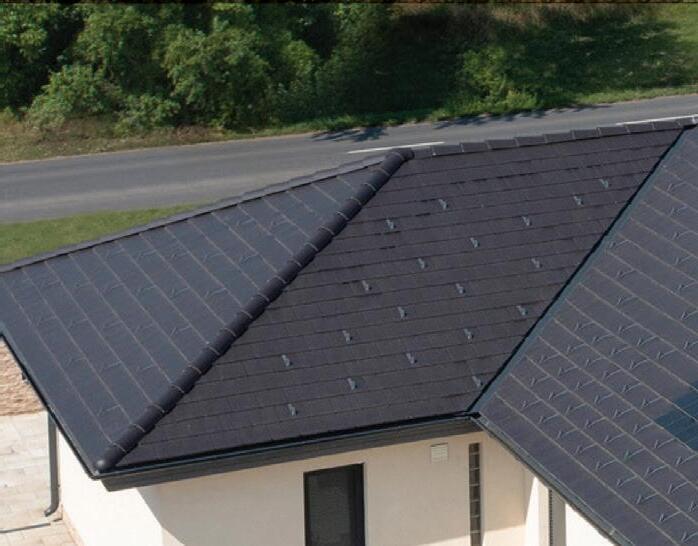



www.breedon-generon.com


























While everybody likes the idea of solar power, very few like the look of solar panels. But now there’s a much more attractive option – Generon roof tiles. Created by leading tile makers Breedon and Terran, Generon is truly unique. Clean solar power is discreetly generated by an innovative combination of standard size roof tiles and advanced photovoltaic cells, to create a beautiful energy-generating roof. Even better, Generon can be fitted like standard roof tiles, by any professional roofing contractor.
Simple, effective, elegant…Generon is a masterpiece of technology, and a true work of art.
Breedon Roof Tiles. Powered by Generon.



Leading heating technology manufacturer Grant, has announced the launch of two brand new online training courses available to engineers, plumbers, installers and merchants via its eLearning Academy.
The Grant eLearning Academy has been providing online training to heating engineers, plumbers, installers and other professionals in the heating industry for several years. The platform allows those in the trade to gain valuable CPD points and learn from the comfort of their own homes and enables access to Grant training anywhere in the world.
Keith Scully, Technical Sales and Training said, “We are delighted to launch two new online courses which include the Grant Vortex HVO conversion from Kerosene course to give a complete overview of what is required by installers when it comes to transitioning a Grant Vortex condensing boiler from kerosene to HVO biofuel.
The second course is focused on the Grant Vortex

Combi boiler and gives an overview of this technology’s operational sequence as well as a fault finding guide.”
Keith has been working in the heating industry for nearly 30 years and his wealth of knowledge and experience, coupled with his commitment to educating engineers, installers, merchants and apprentices has earned him significant respect within the industry.
Commenting on Grant’s commitment to training and education within the heating industry, Keith Scully said, “At Grant, our R&D team works tirelessly to design and manufacture the most efficient and forward-thinking heating technologies for our customers. We are also passionate about training and educating and ensuring that those working in the industry have access to the best quality learning resources to develop their knowledge of Grant products, to develop experience in installing our technologies and to continue their professional development.
“Our on-site training courses are always full and often additional dates need to be added to meet demand,








which is great. I am delighted that they continue to be so popular and at the positive feedback that we receive from those attending.”
Looking forward, Keith expects demand for training and education to increase further during 2024 and in addition to the two new courses Grant has just launched on its eLearning Academy, the company will be adding more new courses within the coming months to their Training Academy offering.
“It is important to keep the content fresh in our training courses, so I am always looking at new ways to communicate the details within our courses in a practical and meaningful way. That may include new industry developments, or in a particular product or best practice when it comes to installation. There are a number of new courses being finalised for both onsite and online learning and we look forward to launching
these in due course,” concluded Keith.
Sign up to the Grant eLearning Academy to access Grant’s newest training courses, using the QR code below.


Visit www.grant.ie for more information on Grant’s range of innovative heating solutions and to learn more about Grant’s training opportunities.
You can also follow Grant on Facebook and Twitter @GrantIRL, Instagram @Grant_IRL or LinkedIn @ GrantEngineeringULC
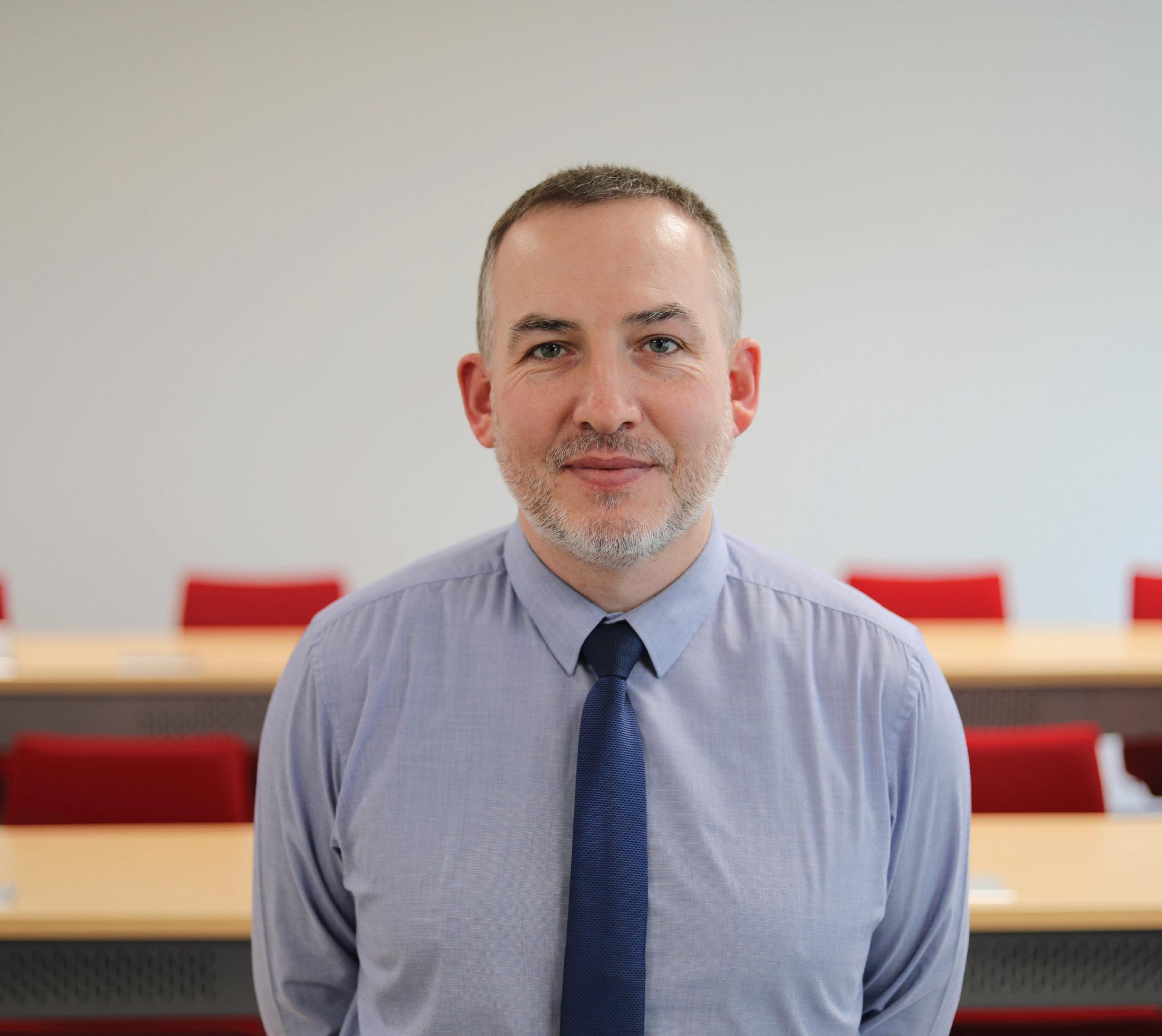




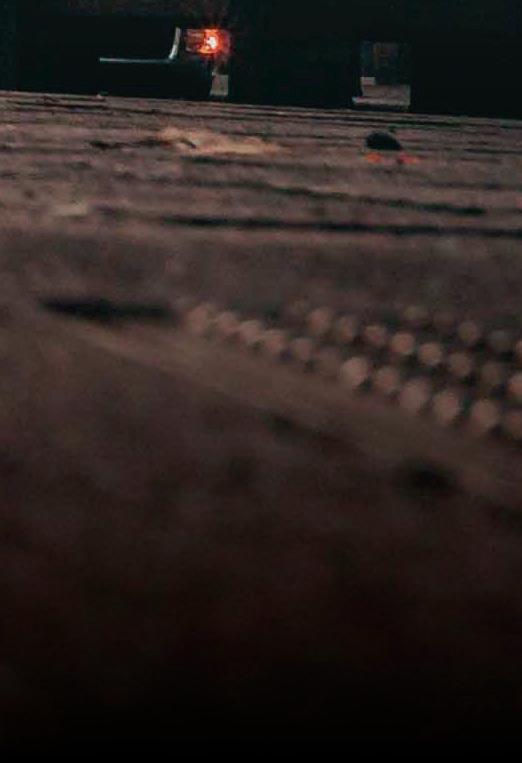
Construction output is a vital economic indicator that reflects the health and activity level within the construction industry of a country. In the case of Ireland, examining its construction output in comparison to other European countries offers insights into its economic dynamics, growth patterns, and structural development. While each country’s construction sector is influenced by unique factors, understanding Ireland’s performance in contrast to its European counterparts provides valuable context for assessing its position and potential within the broader economic landscape.
Ireland’s construction output has historically been subject to significant fluctuations, largely influenced by economic cycles, government policies, and external factors such as global financial crises. In the aftermath of the 2008 financial crisis, Ireland experienced a severe downturn in construction activity, characterized by a sharp decline in output, stalled projects, and widespread job losses.
However, in recent years, Ireland’s construction sector has shown signs of recovery and resurgence, fuelled by factors such as population growth, urbanisation trends, and increased demand for housing and infrastructure.
In contrast, other European countries have experienced different trajectories in their construction sectors. Countries such as Germany and France have more stable and mature construction industries, characterised by steady growth and a focus on infrastructure development and urban renewal projects. These countries benefit from strong regulatory frameworks, long-term planning, and robust public investment in construction projects.
Furthermore, the composition of construction output varies across European countries, with some economies emphasising residential construction, while others focus more on commercial, industrial, or infrastructure projects. For instance, Ireland has experienced significant demand for residential housing in recent years, driven by popu-
lation growth, urbanisation, and changing demographics. In contrast, countries like Spain and Italy have faced challenges related to excess housing stock and property market fluctuations, impacting their construction output and investment patterns.
Another factor influencing construction output in Ireland is the regulatory environment. Ireland has faced criticism for its planning laws and regulations, which some argue, including myself, have hindered the development of new housing and infrastructure projects. Lengthy planning processes, bureaucratic red tape, and resistance from local communities have often delayed or stalled construction projects, leading to bottlenecks and inefficiencies in the construction sector.
Moreover, external factors such as geopolitical events, trade dynamics, and global economic conditions can impact construction output in European countries. For instance, Brexit-related uncertainties have affected construction activity in the UK and Ireland, given their close economic ties and shared land border. Similarly, fluctuations in commodity prices, currency exchange rates, and interest rates can influence construction costs, investment decisions, and project viability.
Despite these challenges, Ireland’s construction sector has shown resilience and adaptability. Government initiatives such as the National Development Plan and the
Construction Industry Register Ireland (CIRI) aim to promote sustainable growth and improve standards within the construction industry. Investment in infrastructure projects such as the Dublin Metro and the National Broadband Plan is also expected to drive construction output in the coming years.
In terms of prospects, Ireland’s construction sector is poised for continued growth and development, albeit with challenges and uncertainties. The ongoing transition to a low-carbon economy, the adoption of digital technologies, and the need for sustainable infrastructure present both opportunities and challenges for the construction industry. Collaboration, innovation, and resilience will be essential for Ireland to navigate evolving trends and remain competitive in the European construction market.
In conclusion, while Ireland’s construction sector faces unique challenges compared to other European countries, such as volatility in the housing market and regulatory constraints, it also presents opportunities for growth and innovation. By addressing key issues such as planning reform, infrastructure investment, and skills development, Ireland can strengthen its construction industry and contribute to sustainable economic development. Moreover, by learning from best practices in other European countries and fostering collaboration and innovation, Ireland can position itself as a leader in the construction sector in the years to come.


Rachael O’Boyle is an Operations Engineer at Energia Group. Since joining the Graduate Programme in 2020, she has become a key player in several major innovations. During her time at Huntstown Power station she was heavily involved in the return of service to the Unit 2 transformer while also achieving a Distinction in Combined Cycle Power Plant Operation. In Renewables Operations, Rachael has developed models using WindPRO software to optimize operational issues, resulting in increased turbine productivity. Rachael has also been involved in integrating new technologies such as a hydrogen production and battery storage into the business.
Before joining Energia, Rachael already demonstrated excellence in engineering. She earned 2nd place at the BT Young Scientist Award for designing and manufacturing a Time Compressed Transport Tester. Additionally, she
achieved a first-class honours for her Masters in Electrical and Electronic Engineering from Queens University.
At university, Rachael was awarded a Caterpillar NI scholarship and for her dissertation, she designed and implemented Predictive Maintenance for Manufacturing Systems at Caterpillar Larne, where she was the youngest female manufacturing engineer to lead an assembly line. In her final year at University, she was accepted into an Electronics, Electrical, Engineering, and Computer Science Women’s Leadership Programme.
Rachael is a strong advocate for women in STEM, encouraging young females to pursue careers in engineering. She has been involved in school literacy programmes and STEM student mentoring as well as leading the Early Career circle of the Women In Energy Network at Energia.


M&N Civil Engineering proudly celebrated its 20th anniversary on Friday, February 16th, 2024. Established in 2004 by founder Manus McGarvey, driven by a passion for machinery and a commitment to delivering exceptional projects.
From its humble beginnings in building one-off houses and local schools to its current involvement in the largest basement excavations in Dublin city and soil stabilization projects for large residential developments, M&N Civil Engineering has continuously evolved its expertise and capabilities to meet the dynamic and ever-changing needs of the Irish construction market.
Manus McGarvey’s journey began with a love for machinery, cultivated since his youth. In 2004, he took a leap of faith and established M&N Civil Engineering, purchasing his first machine despite uncertain prospects. During the initial phase, the company faced challenges typical of startups.
“The early years were challenging, but they were also defining moments for us,” reflects Manus McGarvey, CEO of M&N Civil Engineering. “We will continue to innovate and collaborate; that’s always been the foundation for
M&N. Our people - our employees are the heartbeat of the organization. Their dedication and hard work have been the driving force behind our success.”
The company’s resilience was put to the test during the collapse of the Celtic Tiger era. In response, Manus seized opportunities abroad, securing a 14-month contract with the Romanian government for infrastructure projects. These strategic endeavours not only sustained M&N Civil Engineering but also broadened its horizons, laying the foundation for future success.
In 2011, a significant milestone came for M&N Civil Engineering when they were approached by one of the largest contractors in Ireland. They had a data centre project and needed a contractor they could trust to deliver,” recalls Manus McGarvey, CEO of M&N Civil Engineering. “The project went so well that we continued to do 9 phases on the Data Centre campus, which was a testament to our reliability and commitment to excellence.”
M&N has worked on several significant projects in Ireland ranging from large Data Centres, commercial office & retail projects, (Fibonacci Square / Facebook HQ in Ballsbridge,
Kevin St. Garda Station ) Private & Public Residential housing & number of large Infrastructure Projects. “At M&N, we pride ourselves on being a reliable company, with a reputation for completing every job to the highest standards,” adds Jason Kenny, Commercial Director of M&N Civil Engineering. “ Everyone has their part to play, and everyone knows that they’re part of something special”
Today, M&N Civil Engineering is a testament to perseverance and professionalism. With a dedicated workforce and a diverse project portfolio, the company maintains its steadfast commitment to excellence in the civil engineering sector. The company’s achievements are
a reflection of its strong leadership, innovative approach, and unwavering commitment to quality.
Looking forward, Manus is filled with optimism for the company’s future. “ We can’t wait to work on some of the most fantastic projects that are coming down the line,” he exclaims, echoing the sentiment of excitement and anticipation shared by the entire M&N Civil Engineering family.
As M&N Civil Engineering celebrates this significant milestone, it reaffirms its dedication to delivering excellence, innovation, and client satisfaction, poised to embrace the opportunities that lie ahead.

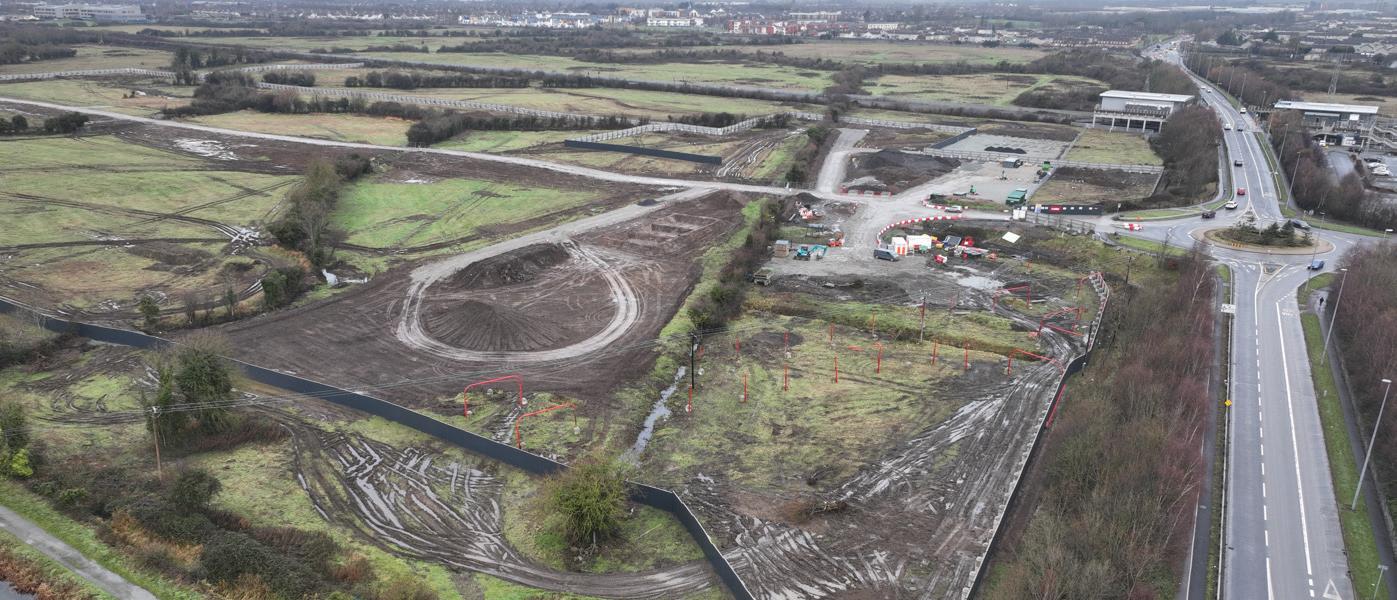
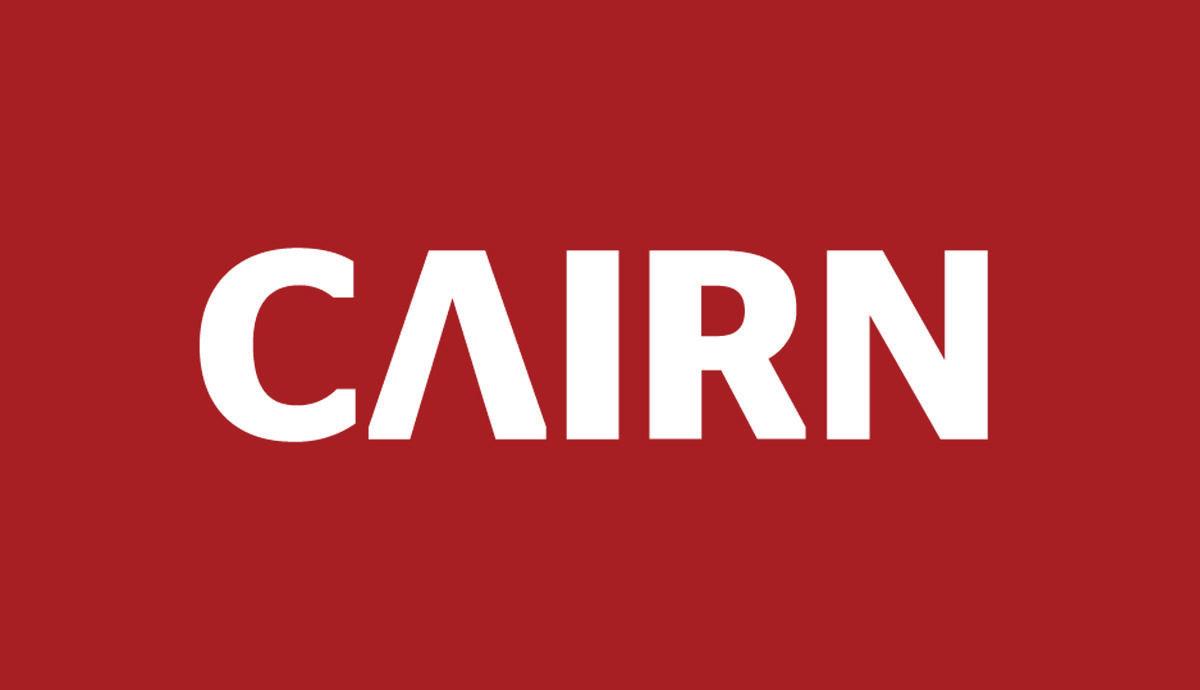
The Greek Philosopher Heraclitus famously once said: ‘Big results require big ambition’. Cairn embarked on a new adventure that certainly required bundles of big ambition – the building of Seven Mills, a vibrant new town, located on the Grand Canal between Lucan and Clondalkin in Dublin 22.
Seven Mills is part of the Clonburris Strategic Development Zone (SDZ). Cairn, as the majority landowner, is currently in the process of delivering 5,500 new homes for over 15,000 new residents at Seven Mills, including a substantial number of social and affordable new homes.
Seven Mills represents a once-in-a-generation opportunity to create a vibrant and holistically sustainable community, with top-class amenities in a well-designed and planned environment.
Following decades of master planning by South Dublin County Council and the initial planning application
December 2022
by Cairn in December 2021, the journey to construct quality new homes at scale, at this attractive location, began in earnest in January 2023 with the first 100 residents having moved in by the end of 2023.
While Cairn is an unrivalled expert at building homes, it also knows the importance of building communities.
Sustainable neighbourhoods require accessible and versatile facilities to meet needs such as education, culture, sports, childcare, environmental health, green spaces, wellness and social interactions. The quality of these environments encourages greater wellbeing and creates a place for people of all ages, building a town for future generations.
When Seven Mills is complete it will consist of purposebuilt community buildings, as well as commercial and retail space, providing local employment opportunities and places for residents to eat, work and unwind.

December 2023
What makes Seven Mills truly special is that is designed to give residents access to all essential amenities and services within a five-minute walk of their doorstep. This includes schools, public transport, green spaces, civic and community amenities, healthcare, cafes, shops, supermarkets and employment.
Bringing sustainability and biodiversity to the next level Sustainability is at the heart of Seven Mills and every home is HPI and Well Building Institute registered. Seven Mills has 3.5km of canal frontage, and an extensive network of 12.5km walkways and cycleways that offer natural outdoor spaces for people to relax and unwind. It is also accessible by rail, road, cycleway and footpaths and boasts two train stations, GoCar and Bike Share services.
Seven Mills is targeting the goal of becoming Ireland’s first biodiversity net gain town through the development of 225 hectares of green spaces and the planting of 25,000 native Irish trees.
To find out more about Seven Mills, this once-in-a-generation new town with big ambition, visit: CairnHomes.com


In 2023, Quintain proudly handed over the keys to 718 homes, marking a significant achievement. While their focus prioritizes efficiency and affordability over sheer size, this accomplishment solidifies Quintain’s position as Ireland’s largest privately owned housebuilder.
To achieve this level of productivity, Quintain’s production line operates on a much larger scale. They currently manage 11 active construction sites, where 2,000 homes are under construction. The total construction cost for these projects is close to €600 million. While multiple other sites will commence in 2024, Quintain have a medium-term ambition to deliver
1,500 homes annually and they have 7,000 plots with planning permits in place for more than half of their land portfolio, providing a strong platform to achieve this scale target.
Quintain’s success is attributed to a dedicated team of in-house professionals, including experts in Development, Sales, Finance, Commercial, and Construction. Within Quintain’s Construction Team, there are two distinct divisions:
1. Low-Density Division: This team focuses on singlefamily homes and other low-density housing projects.
2. High-Density Division: Responsible for constructing
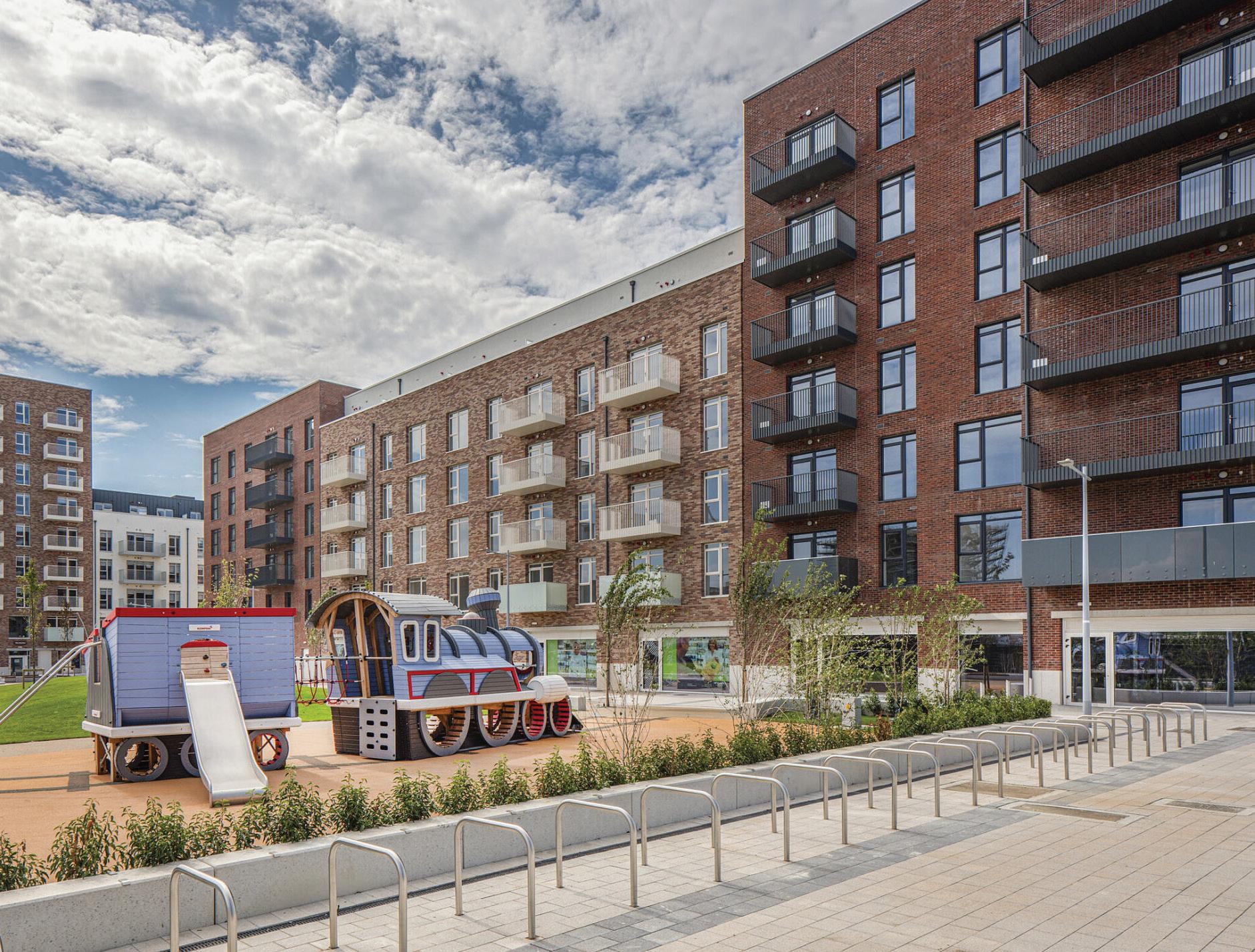
apartment complexes and other high-density developments.
In this article, we delve into an example project from each division, shedding light on their unique processes and the challenges they encounter.
The Crossings: A High-Density Residential Scheme in Adamstown, Co. Dublin
In 2023, Quintain celebrated the completion of the first phase of The Crossings, a remarkable development that seamlessly blends residential, retail, and commercial spaces. Here are the key highlights:
Phase One Accomplishments:
• 279 residential units alongside 11,700 square meters of retail space.
• Upon full completion, The Crossings will encompass:
• 975 residential units
• 18,000 square meters of retail space
• 3,500 square meters of commercial areas, including a civic/library building, a creche, and an enterprise centre.
• At its heart lies a central urban plaza, meticulously
designed to breathe life into the neighbourhood. This vibrant space will foster community interaction and become a destination where people spend quality time.
The Viability Challenge:
The viability of apartment developments has been a well-documented challenge. The Crossings has been eagerly anticipated for over two decades, with several false starts due to apartment viability concerns.
Efficiency in Apartment Design:
• Quintain tackled this challenge head-on by reevaluating every aspect of the scheme.
• Design efficiency became a cornerstone of the process for all apartment development
• Key Performance Indicators (KPIs) played a crucial role:
• Ratios such as Nett to gross and wall to floor area were closely monitored.
• Quintain emphasized repetition in apartment layouts, optimizing bathroom, window, and kitchen types.
Remarkably, achieving these KPIs didn’t compromise

the apartment layouts or architectural aesthetics. Instead, it significantly reduced costs and improved affordability.
Car-Parking Solutions:
Initially, The Crossings was planned with a large underground basement car park—a major driver of unviability. Quintain rethought this approach:
• Instead of an expensive, carbon-heavy underground concrete basement, they opted for a landmark multi-story car park.
• Collaborating closely with their architects, Quintain designed this car park to be both cost-effective and impactful.
From its inception, sustainability has been woven into the very fabric of The Crossings. This innovative development, situated in Adamstown, Co. Dublin, seamlessly integrates residential, retail, and commercial spaces. Here’s how they’ve championed sustainability throughout the project:
Strategic Location:
• Immediate Proximity: The Crossings stands adjacent to the Adamstown Train Station and a Dublin Bus Terminus.
• Promoting Public Transport: Our vision is to encourage commuters who currently drive into the city to embrace the convenience of “park and ride” using the robust public transport network.
Electric Vehicle Charging Infrastructure:
• Forward-Thinking Approach: In anticipation of future needs, Quintain have installed electric vehicle charging points in 25% of the car parking spaces.
• Commuter Convenience: Park & Ride users can now charge their electric vehicles while commuting via public transport.
• Climate Action Goals: These initiatives align with the Government’s Climate Action Plan, contributing to reduced emissions and a greener future.
NZEB Compliance and Building Performance:
• Nearly Zero Energy Building (NZEB): Quintain’s design adheres to NZEB standards, ensuring energy efficiency and minimal environmental impact.
• Building Regulations: Quintain have met and exceeded current building regulations, achieving an impressive BER A3 rating.
• High-Performance Fabric: The building envelope boasts exceptional insulation and airtightness, minimizing energy loss.
• Solar Power: Rooftop photovoltaic panels harness renewable energy, reducing reliance on conventional power sources.
• Materials and Longevity:
• Eco-Conscious Choices: Quintain have utilized GGBS Concrete (Ground Granulated Blast Furnace Slag) and recyclable aluminum façade elements.
• Low-Energy Fittings: Thoughtfully selected fixtures contribute to energy savings.
• Robust Specifications: Durability and low maintenance were key considerations, ensuring the building’s longevity.
UN Sustainable Development Goals (SDGs): Aligned with Global Objectives: When viewed through
the lens of the SDGs, The Crossings meets criteria for 13 out of 17 goals.
Quintain’s commitment extends beyond construction— it’s about creating a sustainable community where people thrive. The Crossings stands as a testament to affordable living, innovative thinking, efficient design, dedication to a greener, more resilient future and a commitment to creating vibrant, sustainable community.
Cherry Lane: A Low-Density Residential Scheme in Cherrywood, Co. Dublin
Cherrywood is a new neighbourhood in South County Dublin and Cherrylane is one of the first housing developments within the Cherrywood SDZ with 168 homes and a variety of two-, three- and four-bedroom homes.
There were two challenges in this development to be considered during the planning and construction stages. Firstly, the development was planned on a valley that ran through Cherrywood which required
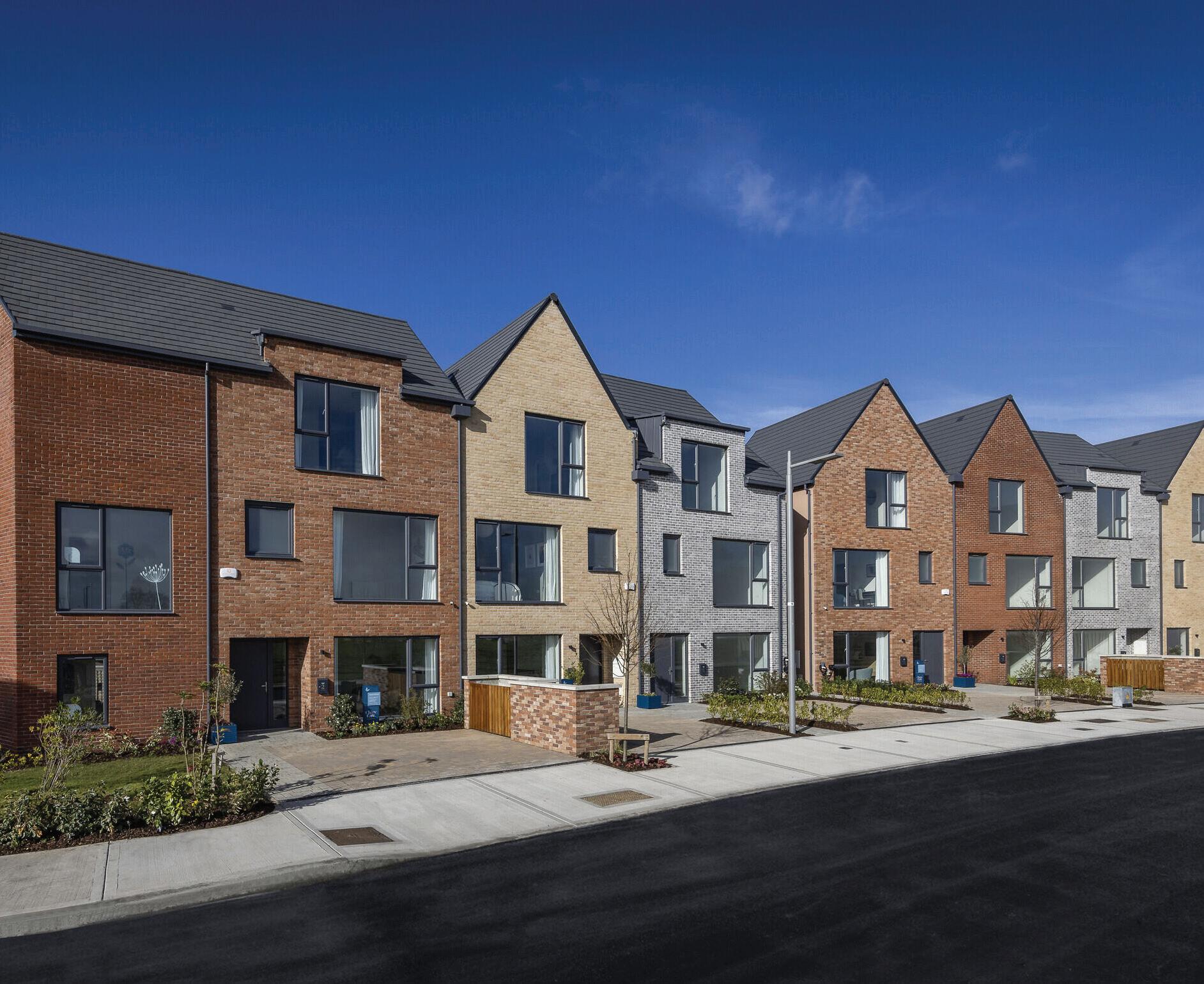
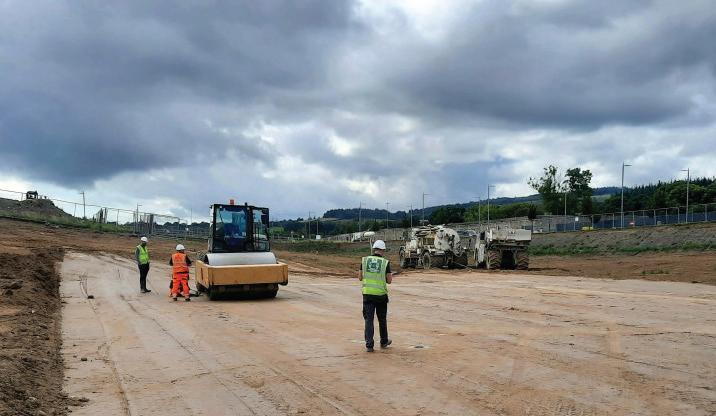
53,000cu.m of fill to be imported at a considerable cost and secondly it also required a new Architectural influence. Both challenges are considered in detail in this article.
Importing 53,000 cubic meters of quarried aggregates to the site for filling the valley upon which the houses in Cherry Lane were built would have been unthinkable. Not only due to the prohibitive financial cost involved, but also the carbon footprint resulting from quarrying the material and the 10,600 truck journeys required to transport it on-site. Additionally, the nuisance factor of these truck movements on the local community meant that a better solution to this traditional method had to be found.
As with all building sites, Cherrywood had an abundance of surplus soil that needed to be exported off-site, generally to a landfill. This situation opened up an opportunity for a Soil-Stabilization solution to meet the fill needs of Cherry Lane.
Soil Stabilization is a well-established technique that treats soil with a binder agent (generally cement or lime, depending on the soil composition). This renders the soil structurally acceptable as a filling material for constructing buildings. Cherry Lane subsequently became one of the largest Soil Stabilization projects in Ireland, requiring 53,000
cubic meters of fill to a depth of 5.5 meters at the deepest point.
The Soil Stabilization technique offered several advantages. Firstly, it was a minimum of 10 weeks faster than the traditional filling method. Secondly, it was considerably more cost-effective. These two advantages alone fulfilled Quintain’s aim of providing quality homes as efficiently and affordably as possible. Moreover, the Soil Stabilization approach significantly reduced the carbon footprint— approximately 65%—by minimizing waste sent to landfills and emissions-intensive quarrying and transportation of materials to the site.
When creating a new town in Cherrywood, together with their Architects Quintain carefully looked at older cities and the grain that they create over time, with different buildings and architectural styles. Quintain considered how they would create this, in a contemporary way, in the new town of Cherrywood so that it felt timeless as a place.
Part of Quintain’s strategy for Cherrywood was to set up different character areas with different design teams all working together under one masterplan. This led to a palette of materials and landscape features that was consistent, that knitted the overall masterplan together but individual styles which


gave different character areas, which people would recognise as their individual neighbourhoods.
Quintain chose to work closely with Urban Agency Architects on the Cherry Lane project to develop a masterplan for this area that would be influenced by the City of Copenhagen and particularly the famous port of Nyhavn with its identity of vertical, coloured buildings with different heights and roof profiles. This makes it one of the most important spaces in a city which is famous internationally for its design and quality of life. Quintain studied this place and asked how they can learn from its history and language and bring some of its placemaking qualities to Cherry Lane.
The resultant placemaking strategy behind Cherry Lane was to work with materials to express homes vertically, contrasting different brick colours.
The strategy was to use 4 different brick colours, vertically differentiating each house and alternating roof profiles to give an individuality to each home. In the overall masterplan there was a series of different typologies of houses, duplexes and apartments that gives further differentiation to each street. All these combined with different height buildings, and careful detailing means that street means people can feel their home is special, and not the same as each one on the street.
As with everything Quintain do, placemaking, affordability, efficiency and sustainability are the driving elements in the project, and alongside the social sustainability of the design, they drove standards in the environmental sustainability and construction of the project. The homes in the development are all A rated, with renewable energy built into each home. Quintain set out to make this an exemplar development and lower the overall embodied carbon of the project by using timber frame and its carbon sequestering properties. These steps combined with the soilstabilisation technique greatly increases the overall sustainability of the project.
Overall, the project was about learning from placemaking in the best cities in the world and making a new town that is a benchmark sustainable development. The design is rooted in strong placemaking principles of creating individuality and making spaces that will allow new residents to flourish into strong communities.
Quintain’s goal is to create neighborhoods that are sustainable and affordable while improving residents’ quality of life. We design mixed-use areas to promote inclusivity and vibrant communities with all amenities close to peoples homes. By prioritizing residents’ needs and using smart design, we contribute to thriving and sustainable environments.
Quintain’s approach is characterised by a constant eye on value for money combined with creativity, innovation, and an entrepreneurial spirit.


The year began with moderate housing commencements, witnessing a gradual uptick as it moved from winter into spring. This grew into a remarkable surge by March, indicating a robust response to housing needs. Although there was a slight slowdown as summer transitioned to autumn, the final quarter saw an encouraging recovery. Notably, the year marked a 17.4% increase in housing starts compared to 2022, with a total of 32,989 units initiated. This uptick reflects positively on government efforts to boost housing supply and suggests a strong market response to the demand.
On the completion front, the housing sector showed impressive resilience. Early months saw steady progress, with a significant spike in April. Despite a minor dip in August, the year picked up momentum again, with September witnessing an extraordinary boost in housing completions. The sector celebrated a 14.7% rise from the previous year, totaling 29,890 completed units, sur-
passing the government’s target of 29,000. This achievement not only reflects a successful governmental policy but also brings much-needed relief to Irish households grappling with housing shortages.
However, this positive trend does not obscure the potential challenges ahead. Rising construction costs, labour shortages, and supply chain disruptions remain significant barriers to maintaining or increasing the current pace of housing completions. The government and industry stakeholders need to address these issues proactively to avoid potential setbacks in 2024.
Moreover, market sentiment, while currently optimistic, could be affected by economic uncertainties, including inflation and potential shifts in policy. The focus should not only be on the quantity but also the quality and affordability of housing. Ensuring sustainable, energy-efficient homes that cater to a diverse range of income groups remains a critical area of focus.

In 2023, there were appeals lodged against 339 residential projects equating to 20,783 homes. 12,725 related to apartment developments. There were six student accommodation projects with An Bord Pleanála (ABP) comprising 775 student beds.
At the close of the year 316 residential projects (11,337 homes) were overdue a decision from ABP. The most, at over 1,877, were in Dublin City Council followed by Cork County Council with 1,270.
LRD’s or Large-Scale Residential developments are developments made to local authorities for over 100 or more houses or for the development of Student Accommodation for more than 200 bed spaces and were established by Government in December 2021 to speed up the delivery of housing. At the close of the year CIS had listed 134 such applications.
Work commenced on 791 new residential projects in 2023 with an overall project value of €6.15bn and residential units totaling 29.9k. There was an almost even split between the number of houses and apartments across these developments. The type of houses being built remains relatively constant with 3-bed houses being the preferred type, which account for 53% of all house types. For new apartments, one and two bed homes predominate with volumes remaining relatively steady over the last three years. Five new student accommodation projects started valued at over €35m and comprising 624 student beds. This level of investment is significantly lower than in previous years and is 74% down from 2022 where projects to the value of €135m started.
The largest project started in 2023 was the €400m development at the former O’Devaney Gardens Site in Dublin

7 for Bartra Capital Property Ltd consisting of 1,047 units. The second largest development started in April was the €145m - SHD De La Salle Lands in Ballyfermot for 927 homes. Outside Dublin, Falcon Real Estate Development Ireland began works in September on a €180m mixed use development in Waterford North Quays which includes 298 apartments.
29,890 new homes were delivered across 969 sites in Ireland in 2023*
In the first quarter of 2023 the Governments’ Housing for All target was set at 29,000 new-builds for the year, made up of 9,100 social homes, 5,500 affordable and cost rental homes, and 14,400 for private renters and owners. Moving forward, an average target of 33,000 new houses a year are to be built between now and 2030 under Housing for All.
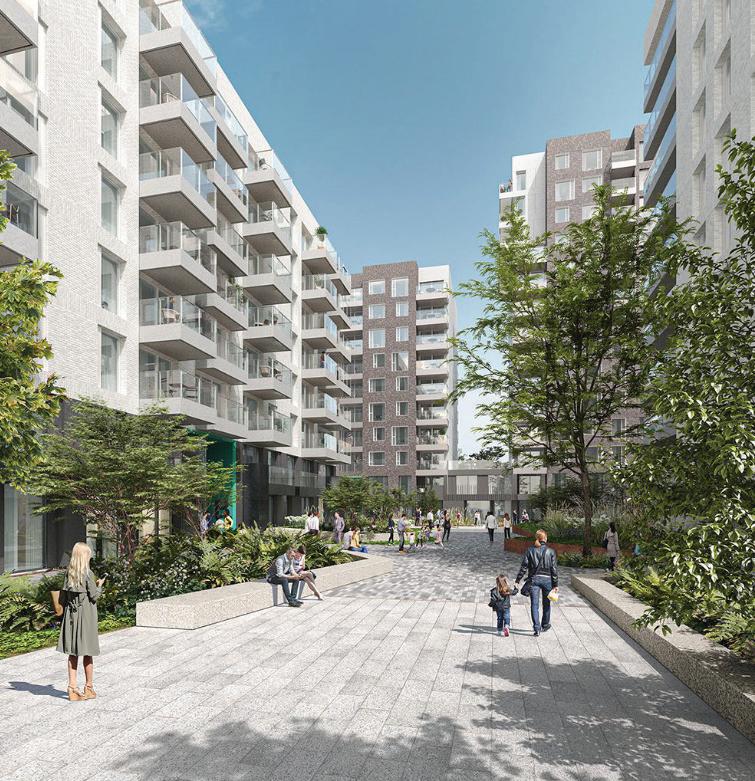
2023 has seen 29,890 housing units completed in the Republic of Ireland, up 15% on the previous year. This overall figure is split between just over 25k units within scheme housing and apartment developments, across nearly 1k sites and 4,855 single dwellings. The year itself started off slowly with just shy of 900 units completed in the first month of the year and peaked at just over 4k units completed in September. The first quarter of the year saw 4.8k units completed. The second and third quarters saw 6.8k and 8.9k units completed respectively and the final quarter of 2023 saw a strong finish, with 9.3k units completed.
As expected, Dublin saw the highest level of delivery with over 11.7k units completed, while the border counties region; Cavan, Donegal, and Monaghan, witnessed just over 1k units completed in 2023. The commuter belt counties, outside of the Capital, as expected, saw the second highest level of delivery with almost 6.5k units completed in Kildare, Louth, Meath, and Wicklow.
One of the largest projects to reach its conclusion in 2023 was the Sandyford Central development in Dublin, for Richmond Homes, which saw 564 apartments completed.
For comprehensive data covering all construction sectors in Ireland and Northern Ireland compiled in one report, please call +353 1 2999 200 or email sales@cisireland. com to learn about our 80+ page 2024 Strategic Planning Report – which enables you to make informed decisions based on detailed and accurate data analyzed by the In-house CIS research department.
Written and compiled by Adam Dargan and Josh Wiler, Construction Information Services.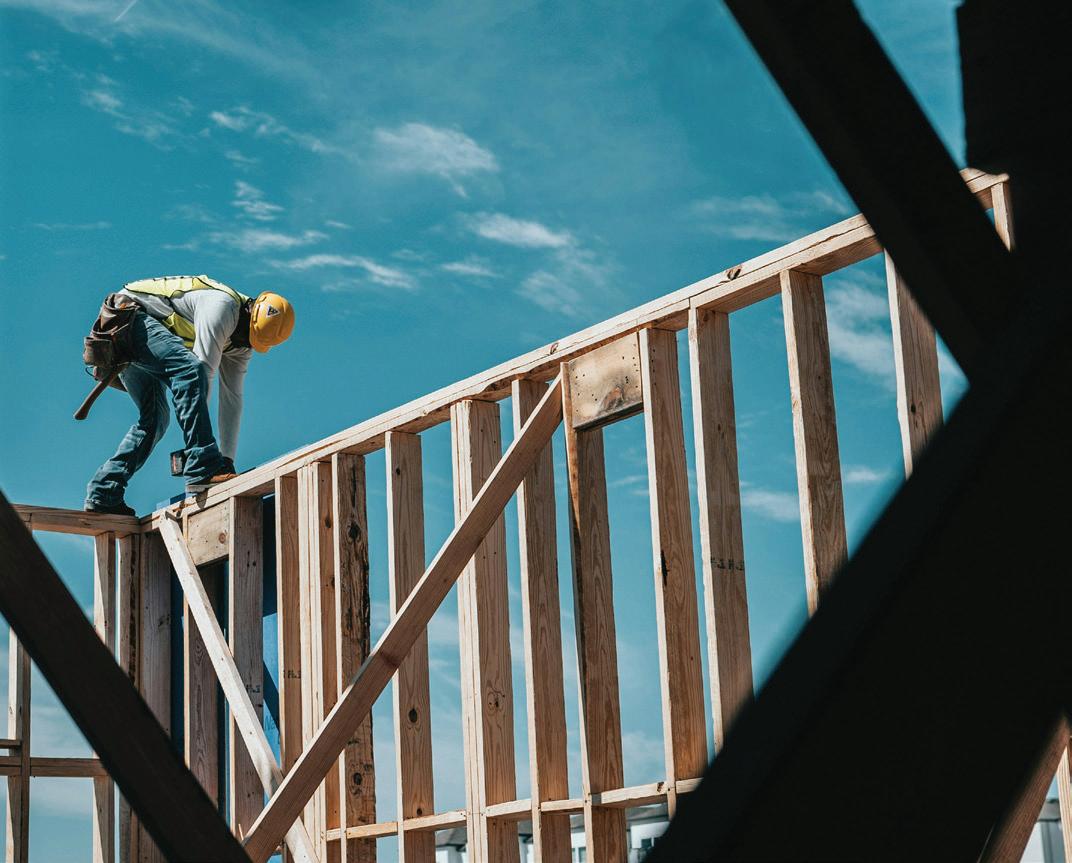


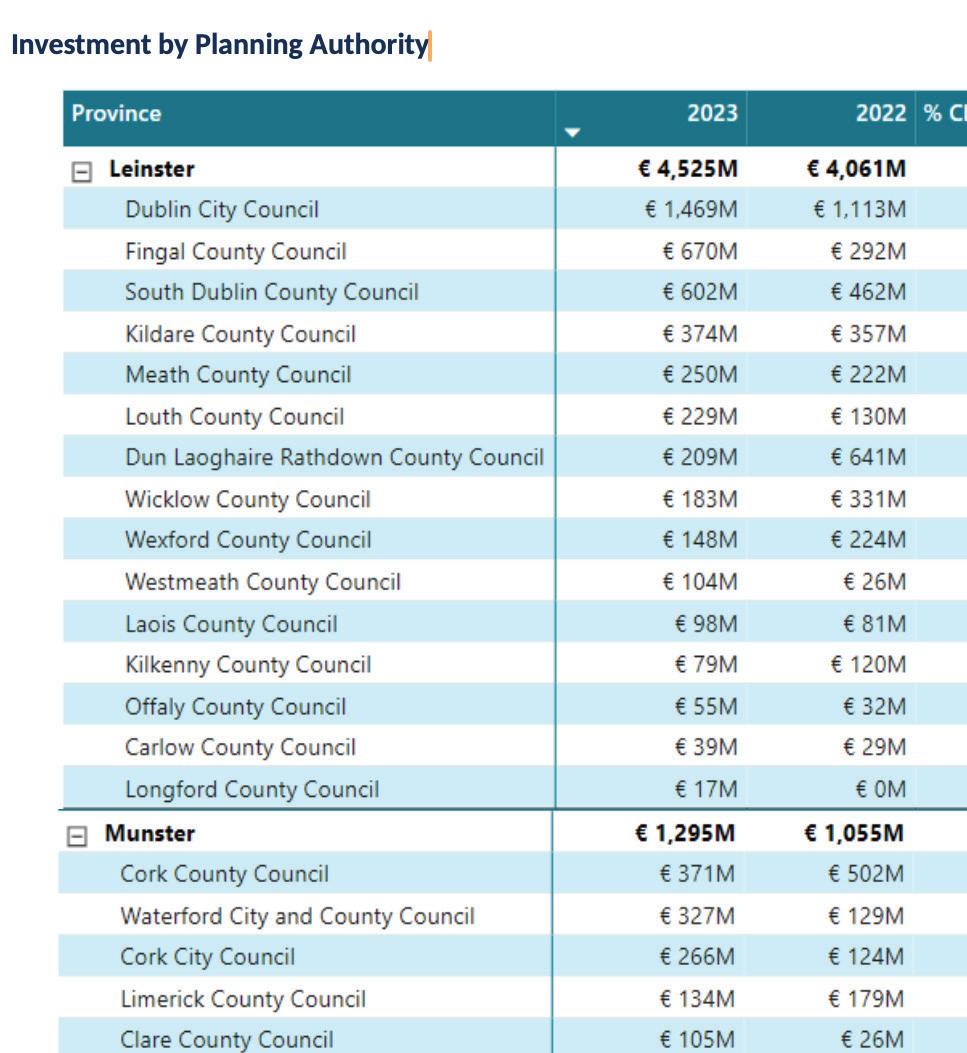



The Dunkettle Interchange Upgrade Scheme was officially opened by the Tánaiste, Micheál Martin TD, marking a significant milestone in enhancing transportation infrastructure and connectivity in Cork. The €215m project promises to alleviate congestion, improve safety, and streamline traffic flow for the region’s residents and businesses.
The Dunkettle Interchange is the junction of four national roads, the M8 Cork - Dublin Motorway, the N25 Cork - Waterford / Rosslare route, the N40 Cork South Ring Road and the N8 Dunkettle - Cork city National Route. The Interchange is located approximately 5 kilometres east of Cork City centre and lies mainly within the Cork City Council administrative area.
Whilst advance works including archaeological and ground investigations got underway in 2016, the main construction contract was awarded by Transport Infrastructure Ireland to John Sisk & Son Ltd in October 2020. The project has delivered 18 new road links totalling 10km in length; seven new bridge structures as well as upgrade works carried out on five pre-existing structu-
res; and upgrades and resurfacing works to the N25 road between Tivoli Roundabout and the Little Island Interchange. In addition, 2.9km of new walkways and cycleways have been developed including the provision of a new bridge across the Cork-Midleton railway line; intelligent Transport Systems throughout the upgraded Interchange; and installation of new culverts and pollution control facilities, landscaping works, directional signage, safety barriers, etc.
Traffic volumes through the Dunkettle interchange are at an all-time high, approaching 120,000 vehicles on the busier days of the week. Despite this, Transport Infrastructure Ireland reports that journey times during peak hours have reduced by almost 50% on average as a result of this upgrade project.
Journey time savings of almost 60% are being achieved on the N40 to N25 route during peak hours, whilst time savings of over 50% are being achieved on routes accessed via the M8 Southbound.
Lord Mayor of Cork, Cllr. Kieran McCarthy said: “The new
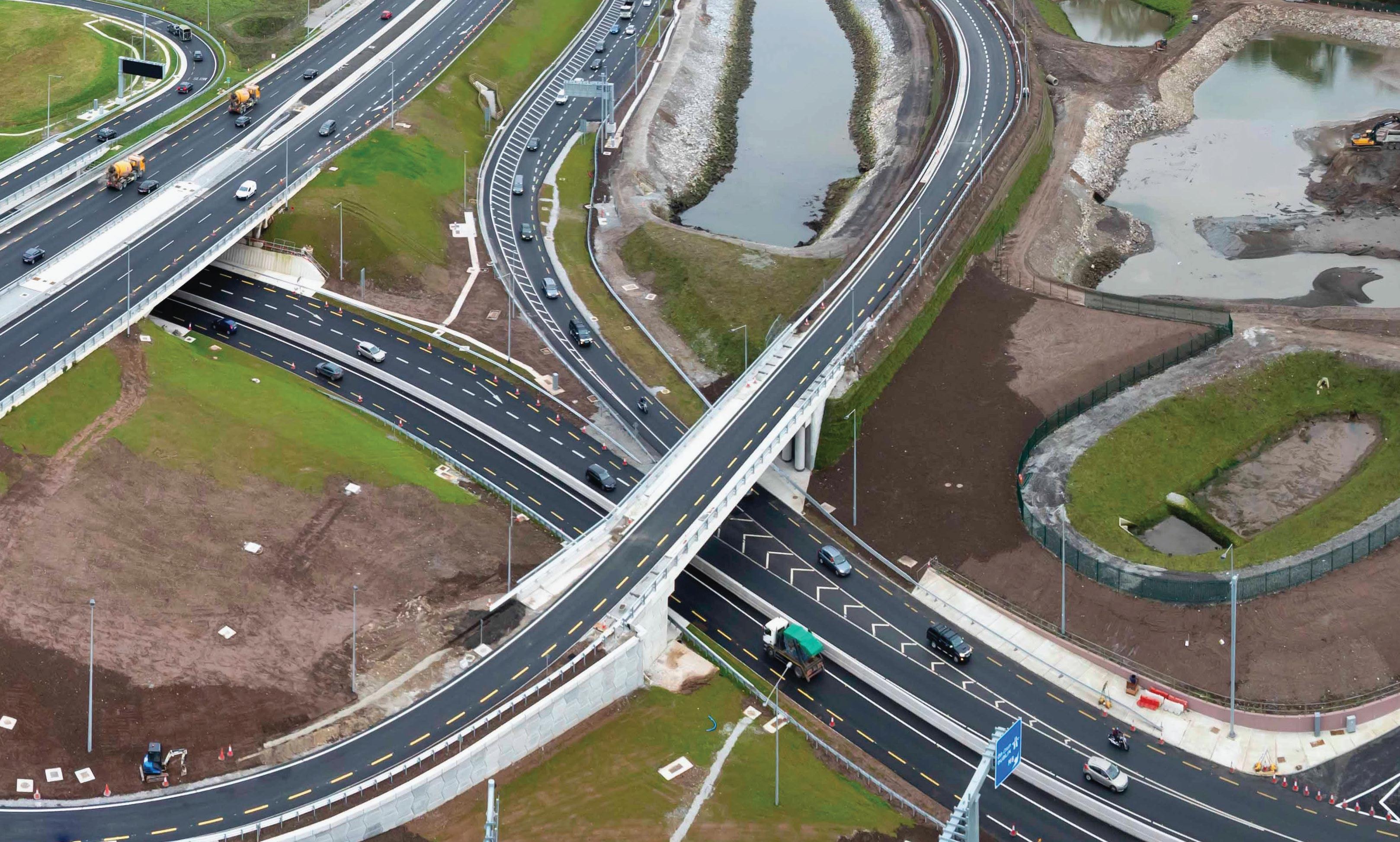
Interchange stands as an important additional piece in the strategic transport infrastructure in metropolitan Cork. This year marks 25 years since the Jack Lynch Tunnel opened, which in its day was seen as an engineering feat. The new interchange is also an engineering feat and adds to the adjacent tunnel’s story and narratives. In our time, the removal of critical bottlenecks creates better traffic flows but also greater connectivity between communities on either side of the River Lee’s estuary. The enhanced connectivity facilitated by this project will undoubtedly fuel progress and opportunity for generations to come.”
Tánaiste Micheál Martin TD said: “I’m delighted to officially open the Dunkettle Interchange Upgrade Scheme today. This infrastructure project represents a significant investment in Cork’s future and provides a vital link in the region’s transport network. I believe that it will be a catalyst for enhancing economic and social activity right across Cork and the entire Munster region.”
Mayor of the County of Cork, Cllr. Frank O’Flynn said: “The completion of this project is a significant milestone in the development of the southern region.

Cork County Council will be working closely with our colleagues in Cork City Council to build on the work done at Dunkettle in terms of active travel infrastructure and deliver further enhancements both east and west of the interchange. The Dunkettle interchange works also support the Council and ambition of developing sustainable travel modes by facilitating safe pedestrian and cyclist mobility in the context of the ongoing development of the Eastern Metropolitan Active Travel Corridor which it is planned will extend to Midleton in the near future. These initiatives make it a particularly exciting time in terms of quality-of-life improvements for the people of Cork.”
Peter Walsh, Chief Executive of Transport Infrastructure Ireland, said: “The Dunkettle Project completion marks the culmination of a journey that has been ten years in the making. Planning permission for the scheme was first received in 2013, and ongoing close collaboration between the Government, Transport Infrastructure Ireland, Cork City Council, Cork County Council, John Sisk & Son Ltd. and Jacobs allowed the project to move forward. It was delivered through innovation and commitment by the entire project team and with the support and patience of the public.”
Will Merriman, Managing Director of Sisk’s Civil Engineering Ireland, said: “Dunkettle was an extremely complex project, working in and around live traffic at one of the country’s busiest intersections, in a major urban environment. We are delighted to have now delivered and handed over the project which has already improved traffic flow, mobility, and multi-user access in the region. I am particularly pleased that we have delivered on our promise of the highest standards of safety and quality with this complex infrastructure project.”
Patrick de Feu, Project Manager, Jacobs stated: “Jacobs
welcome the opening of the Dunkettle Interchange, a project we have been involved in for over 10 years. Cork is a vibrant, growing city, a location that is hugely attractive for investment and as a place to live and work. Infrastructure projects like the Dunkettle Interchange Upgrade are critical to contribute positively to the quality of life for the community, sustain economic development and continue to ensure Cork’s position as a thriving city.”
The contract for the Dunkettle Interchange Upgrade Scheme includes a 3-year maintenance period which will run until 2027. In addition to environmental monitoring and landscaping management, this will also include an ongoing focus on monitoring traffic flows through the network.
For more information about the Dunkettle Interchange Upgrade Scheme, please visit www.dunkettle.ie


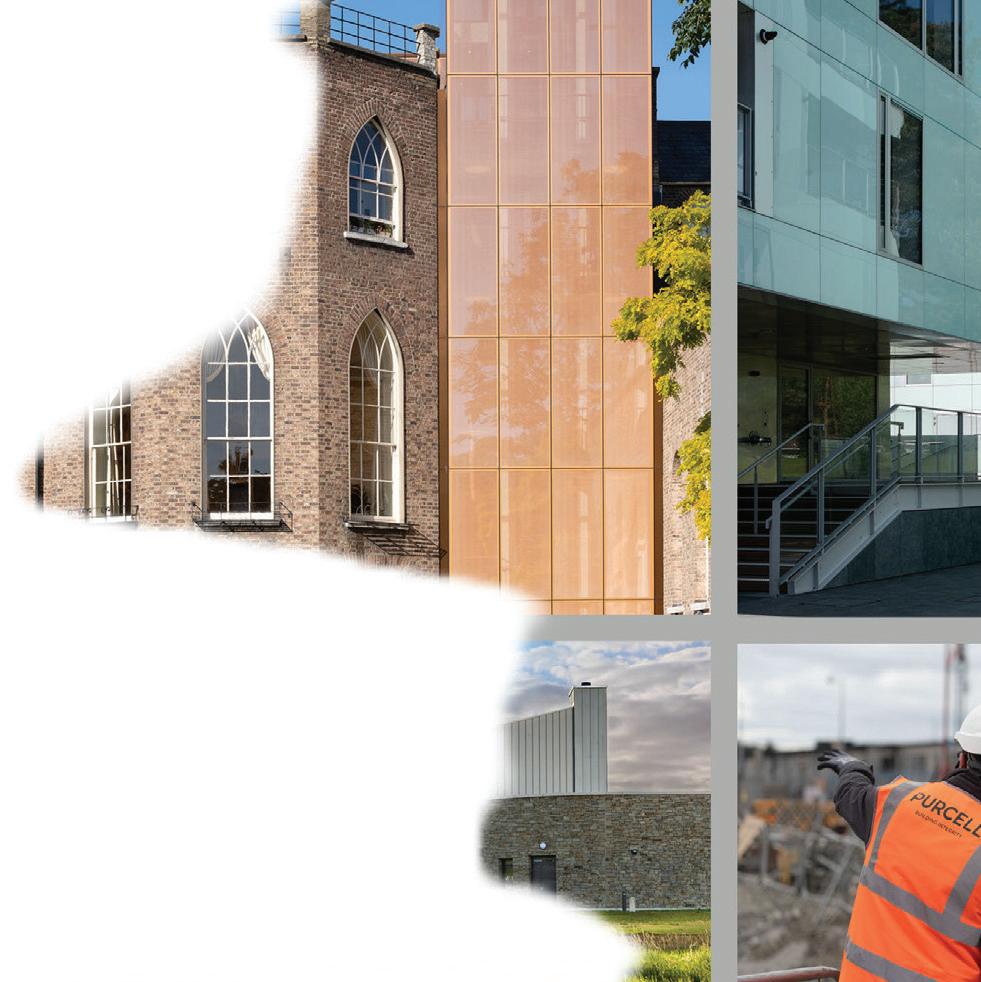



















In conversation with Brian Davy, Associate Director at Turner & Townsend Ireland
“We must now reimagine a system that has been dependent on the predictability of fossil fuels”
In a thought-provoking conversation, Brian Davy, Associate Director at Turner & Townsend, shares his extensive experience in the energy and infrastructure sectors, casting a light on Ireland’s renewable energy prospects and the challenges ahead. With a career that spans con-
tinents and includes significant contributions to major infrastructure and renewable energy projects, Brian brings a wealth of knowledge and a unique perspective to the fore.
International Experience, Global Expertise Brian’s journey in the energy sector began in Waterford, where his education at Waterford Institute of Technology
and his early interest in electrical led him to a career start within the ESB. Work then took him from Ireland to Australia, before Asia and the Middle East. Brian has over two decades of experience working on offshore and onshore energy projects where he played pivotal roles with major TSO’s and Global Energy Agencies.
Returning to Ireland, Brian noted a crucial need for expertise in developing offshore transmission assets.
“The move back to Ireland was driven by a desire to contribute to the country’s energy transition, recognising the significant potential for renewable energy development, especially offshore,” Brian shared.
The Electrification Challenge
Brian points out the current shift towards electrification as a critical strategy for decarbonising the economy. However, this transition presents complex challenges, particularly because renewable sources like wind and solar are intermittent, requiring a dramatic redesign of power systems.
“The crux of the challenge lies in balancing the grid amidst the intermittency of renewables. We are tasked with reimagining a system that has been dependent on the predictability of fossil fuels,” Brian explains.
Addressing these challenges, Brian outlines three strategic approaches that Ireland must consider: firstly, enhancing grid interconnectivity; secondly, converting excess power into green hydrogen; and thirdly, attracting large energy users to areas with high renewable energy production.
Brian particularly emphasises Ireland’s potential to leverage its significant offshore wind resources and the necessity of establishing interconnections with other countries to balance the grid and sell excess power, which is already starting to happen. Interestingly, he points to the opportunity for Ireland to become a pioneer in the green hydrogen sector, a move that would not only provide a storage solution for surplus renewable energy but could effectively position Ireland as a leader in this critical emerging market.
Another aspect of Brian’s strategy involves attracting large energy users, such as data centres, to regions abundant in renewable resources. This approach aims to localise energy demand, thereby reducing the need for extensive transmission infrastructure and fostering regional economic development. But this approach is not without its challenges; Brian believes that a unified communication strategy is crucial to gaining public buy-in for renewable projects.

“The narrative needs to be cohesive, highlighting how individual projects contribute to a larger, national goal of sustainability and economic prosperity,” he states.
Reflecting on the broader implications of Ireland’s energy transition, Brian calls for a holistic approach that considers generation, transmission, and consumption. Drawing from his extensive international experience, he emphasises the importance of state-led initiatives to ensure that the development of renewable energy resources aligns with the public’s best interest, while protecting Ireland’s scenic landscapes.
As Ireland navigates its path towards a more sustainable and electrified future, it is clear that project expertise, and insights gained through international delivery, will be instrumental in guiding the country through the complex landscape of renewable energy development.
“With a clear vision and the right strategic approaches, Ireland is well-positioned to maximise its renewable potential, while balancing economic growth with environmental sustainability,” he states.
Brian Davy is an Associate Director with Turner & Townsend Ireland https://www.turnerandtownsend.com/en/ locations/europe/ireland/
The second-generation Volkswagen Amarok has finally arrived. Ford played a lead role in the development of the pickup truck, so many of the components and underneath elements are from other Fords. The engines, gearboxes and even the software behind the infotainment system are all of Ford’s creation. It is built by Ford at its South African plant in Silverton, and shares the new Ford Ranger’s platform as part of the FordVolkswagen global alliance cooperation.
Despite Ford’s prominent status in the partnership, Volkswagen played a key role in the Amarok’s creation, and was able to configure the truck in a manner that made it much more than just a photocopy of the Ranger. Every part of the external bodywork bar a few – like the rooftop, mirror housings and door handles – is bespoke to the Amarok, which means that there is little chance of mistaking the two vehicles at a glance.
It is undeniably and recognisably a Volkswagen, with elements such as the LED headlights, angular wheel arches and chunky roll bar at the front of the loading bay are all details that will stand out.
Bold and dynamic, the new Amarok has an upright bonnet with integrated LED headlights as standard. PanAmerica and Aventura models receive IQ.LIGHT Matrix-LED headlights and an “Amarok” embossed stamp above the number plate holder. Half-round wheel arches give Volkswagen’s pick-up its distinctive look while the word Amarok is emblazoned across the tailgate.
With its practical controls and digital screens, the interior has been configured with function and quality in mind. Premium materials resemble those from the luxurious Volkswagen Touareg. Meanwhile, the instrument panel’s layout is clear, well structured, and ergonomically tailored to the driver.
At 5,350 mm long, the new Amarok is 96 mm longer than its predecessor. A wheelbase of 3,270 mm represents an increase of 173 mm, providing more room in the spacious double cab. Reduced overhangs result in crisp proportions and improved off-road capability. Ramp angles have been increased to 30-degrees at the front and 26-degrees at the back to improve clearance on rough terrain. Meanwhile, wading depth has been boosted from 500 mm to 800 mm.
Powered by efficient four- and six-cylinder turbocharged engines, the Amarok is alrea-













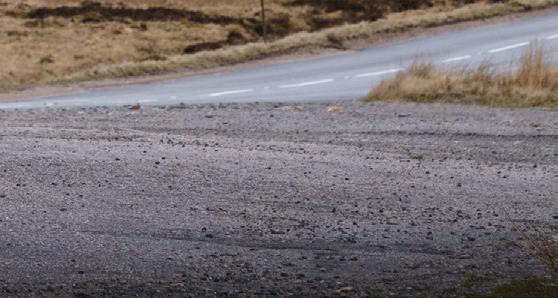
A new Amarok model was well overdue, as the previous version lagged the latest rivals for safety and technology. But this new model changes all of that.
Words: Anthony Kelly


dy a firm favourite with Irish buyers. More than 830,000 first generation Amaroks were sold worldwide since its introduction in 2010. A major model update in 2016 saw the addition of Volkswagen’s powerful and refined V6 TDI engines, opening the Amarok up to a whole new customer base. The second-generation model builds on an already successful formula thanks to the addition of more than 25 assistance systems, infotainment displays measuring up to 12.3in, and high-quality materials throughout.
The new Amarok is the perfect partner for any work or leisure activity thanks to a payload of up to 1.19 tonnes and 3.5 ton towing capacity. Available in five trim levels – Amarok, Life, Style, PanAmericana and Aventura - it is available in Ireland as a double cab, four-door pick-up.
The new Amarok comes as standard with all-wheel drive. Three efficient four- and six-cylinder turbo diesel engines deliver the power needed for any task. The range starts with a 168HP version of the 2.0-litre TDI power unit (available in entry-level Amarok and Life) trims. Stepping up to the Style model increases output of the 2.0 TDI engine to 202HP and adds a 10-speed automatic transmission (optional in Life trim). Volkswagen Commercial Vehicles’ acclaimed six-cylinder, 3-litre TDI power plant - the refined V6 that gave pick-ups mainstream appeal in Ireland - is available in Style, PanAmerica and Aventura models. Power has increased to 237HP, making light work of heavy loads, while power is channelled through a new 10-speed automatic transmission. In Ireland, all Amaroks with automatic transmissions are allowed to tow trailers up to 3.5 tonnes. The permissible total weight of vehicle and trailer has increased from 6 to 6.5 tonnes. Meanwhile, the maximum payload has also increased, to 1.19 tonnes. The Amarok comes with all-wheel drive (4MOTION) as standard. Depending on specification, up to 25 assistance systems make driving safer and even more effortless. Assistance features include automatic cruise control system, a parking assistant, 360-degree all-round
view (‘Area View’), lane change assistant and road sign recognition.
The driving experience of the all-new Volkswagen Amarok is refined, despite the body-on-frame chassis and leaf springs over the rear axle. While the hardware is “off Ford’s shelf”, Volkswagen has tuned the suspension for optimal ride comfort. The refinement and comfort levels put it above its peers. In some ways Ford has built a nicer-to-drive Ranger than the Ranger it sells – but, to put it in context, you’re paying a bit extra for the Amarok’s superb comfort. That extra money has clearly been spent on improving refinement, because precious little road- and wind noise intrude into the cabin. Granted, the off-road-oriented tyres tend to rumble, but it’s no dealbreaker. The pliant ride quality and hushed cabin is complemented by a surprisingly light steering setup that makes the sizeable Amarok fairly easy to manoeuvre in tight parking situations or narrow town and city centres.
The new Amarok range starts from €47,355 for the entry-level Amarok model with a 2.0TDI 168HP engine. Standard equipment is generous, including power folding mirrors, Android Auto and Apple CarPlay integration, VW Connect with eCall Emergency System and Online Voice Control, LED headlights, a 10.1in infotainment system, 8in multifunction display, semi-automatic air conditioning, Traffic Sign Recognition, Adaptive Cruise Control, Rear-View Camera and parking sensors.
Upgrading to Life (from €50,345) adds 17in alloy wheels, body coloured bumpers, 8-way electrically adjustable driver’s seat, rear privacy glass, leather wrapped steering wheel, an electronic parking brake front sensors and rain/light sensing headlights and wipers. Style models (from €64,735) add 18in wheels, a chrome rear bumper, LED-Matrix headlights, heated ArtVelour seats, a 12in portrait-style touchscreen and 12.3-in instrument screen , 10-way electrically-adjustable seats, two-zone Climatronic A/C, Light Assist and Lane Assist.

PanAmerica models (from €68,620) get rugged X-shaped bumpers, LED rear lights, black styling bars and step bars, leather seat trims, a dedicated navigation system, 640-watt Harmon Kardon sound system, ambient lighting, electrically-adjustable passenger seats, black headliner and a 360-degree camera. Meanwhile, range-topping Aventura models (from €70,890) feature large 20in alloys, body coloured sports bars and chrome step bars.
As was the case with its predecessor, the large 1,651mm long by 1,584 mm wide cargo bed has enough room for a Euro pallet loaded sideways or lengthways. Loads are secured via robust lashing rings on the bed and side walls. The maximum height of the tail lift has also increased, dependent on specification, by as much as 21 mm to 529 mm. Static roof load capacity has increased to 350 kilograms – enough for a roof tent for overnight off-road adventures. Meanwhile, the list of options includes alloy wheels up to 21in, wireless smartphone charging, all-terrain tyres, bike holders, roll covers and a hard top for the cargo bed.
All Amarok models fitted with 12in infotainment systems are also equipped with VW Connect Navigation. This package includes Online Traffic Information, Online Route Calculation, Online Map Updates, POI Search, information on parking spaces and filling stations, and real-time weather updates. The WeConnect ID. App al-
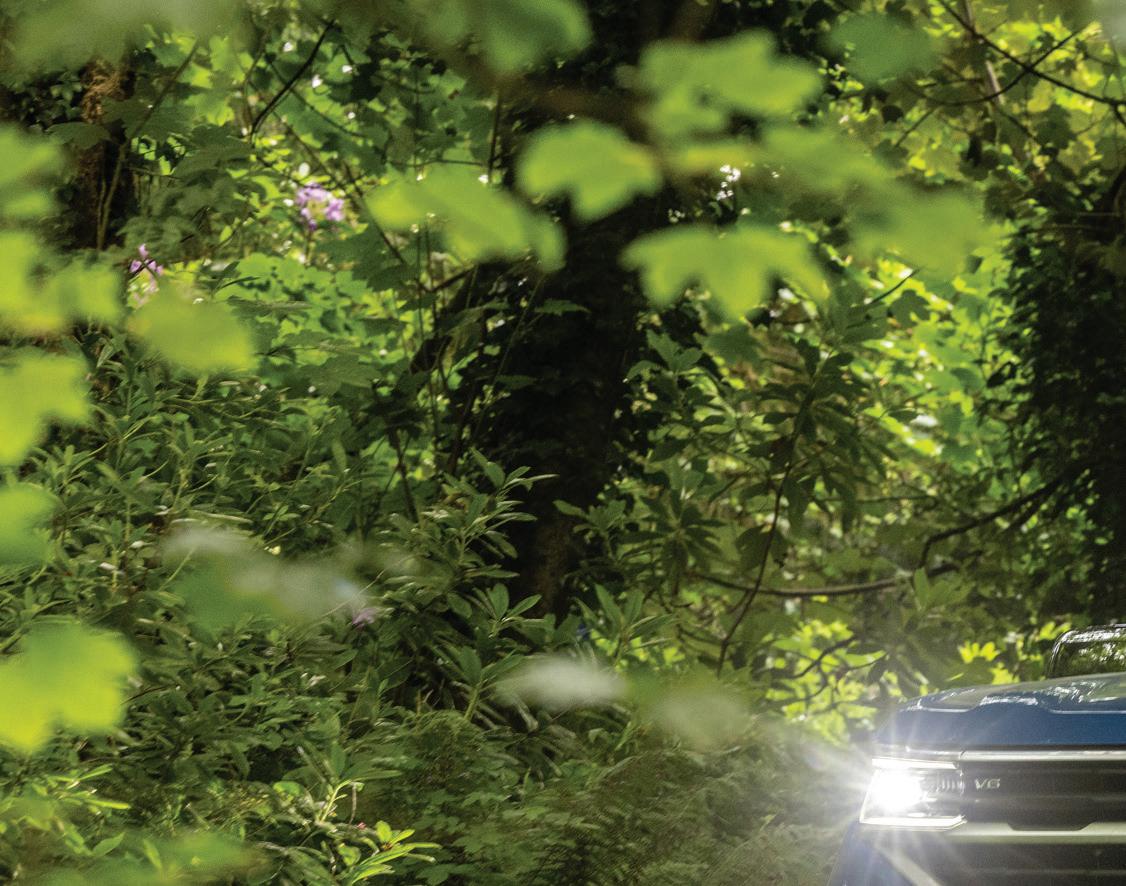

lows owners to interact using their smartphones while an integrated eSIM means infotainment updates can be carried out over the air.
Commenting on the all-new Amarok, Kim Kilduff, Head of Sales and Marketing at Volkswagen Commercial Vehicles Ireland, said: “The first generation Amarok brought pick-ups to the mainstream and this second generation model is an upgrade in every way. It’s a charismatic vehicle with plenty of presence, on and off the road. The premium finish and refined driving experience have elevated it to another level while even the most challenging off-road experience cannot phase it. We knew we were getting a substantial upgrade but the last few days have proved the Amarok is setting a new benchmark for the pick-up sector here in Ireland.”
Volkswagen’s adaptation of the award-winning Ford Ranger platform stands out. Volkswagen has taken an excellent base – already renowned for its newfound levels of refinement and comfort, without compromising on ability – and applied its own touches that address Volkswagen’s own design standards, cabin quality, and seat comfort. If you’re spending most of your time with this vehicle as your daily driver the Amarok is a nice place to be with a fantastic engine lineup.



Turnover and employment continue to increase across the construction sector, according to the Construction Industry Federation’s Quarter 1 Outlook Survey.
The cost of labour and raw materials continues to put upward pressure on pricing across all sub sectors, with 68% of survey respondents experiencing a year-on-year increase in the cost of labour and 60% experiencing a year-on-year increase in the cost of raw materials.
The survey examined projected turnover by sector in 2024. The survey results show that outside of companies that operate in housebuilding, there is a considerable spread in the type of construction projects that companies will deliver.
General building contractors’ portfolios are broadly spre-
ad across home building, commercial, industrial, health, education, office, agricultural and other – both new build and renovation. Civil engineering contractors’ portfolios are primarily spread across energy and water, transport infrastructure and roads – followed to a lesser degree by rail and telecommunications infrastructure. 80% of housebuilders sampled will be undertaking new build, as opposed to residential renovation projects.
Hubert Fitzpatrick, Director General of the Construction Industry Federation said:
“The results of this survey help to illustrate the agility within the construction sector in Ireland from its engagement in design and build, to the multi-disciplinary nature of its labour force.
“Overall construction investment in Ireland is forecast to

increase by 4% in 2024. The residential, non-residential, and civil engineering sectors will continue to expand during 2024. With a growing policy emphasis on sustainable infrastructure development, the civil engineering sector will continue to be the backbone of the wider construction sector with strong growth forecast through to 2026.
“However, with the economy now at full employment, it is more important than ever that policy continues to address the significant capacity constraints and deliverability issues, principally those in the planning and procurement systems. Enabling the construction sector to be at its most effective will assist other parts of the economy to function more productively.
“We must also stress that a clear pipeline of key capital projects is vital to enable construction companies to plan and adapt their capacity to deliver much-needed infrastructure and to give confidence to the industry as it scales up to meet the infrastructure and housing needs of a growing population.
“While inflation is moderating, some construction products, whose production requires significant energy consumption like cement, concrete, GGBS concrete, steel and insultation, are seeing significant price increases de-
spite the downward trend. It is essential that the Government avoids further interventions that could see further price increases in construction products, resulting in further increases in overall project costs.”
The survey of 240 construction companies found that:
• 39% acknowledge an increase in turnover YOY in Q4 with 33% expecting turnover to continue to increase in 2024.
• 26% report an increase in the total number of people they employ with 29% expecting the trend to increase over the next three months.
• 68% experienced a YOY increase in the cost of labour with 55% expecting the trend to persist in 2024.
• 60% report a YOY increase in the cost of raw materials with 57% anticipating the trend to continue into Q1 2024.
• Increasing costs continue to impact the pricing on projects with 52% acknowledging a YOY increase and 45% expecting continued increases in Q1 2024.
• Access to skilled labour (76%), securing a healthy profit margin (62%) and the increased cost of raw materials (53%) remain the three most significant challenges facing the construction industry.

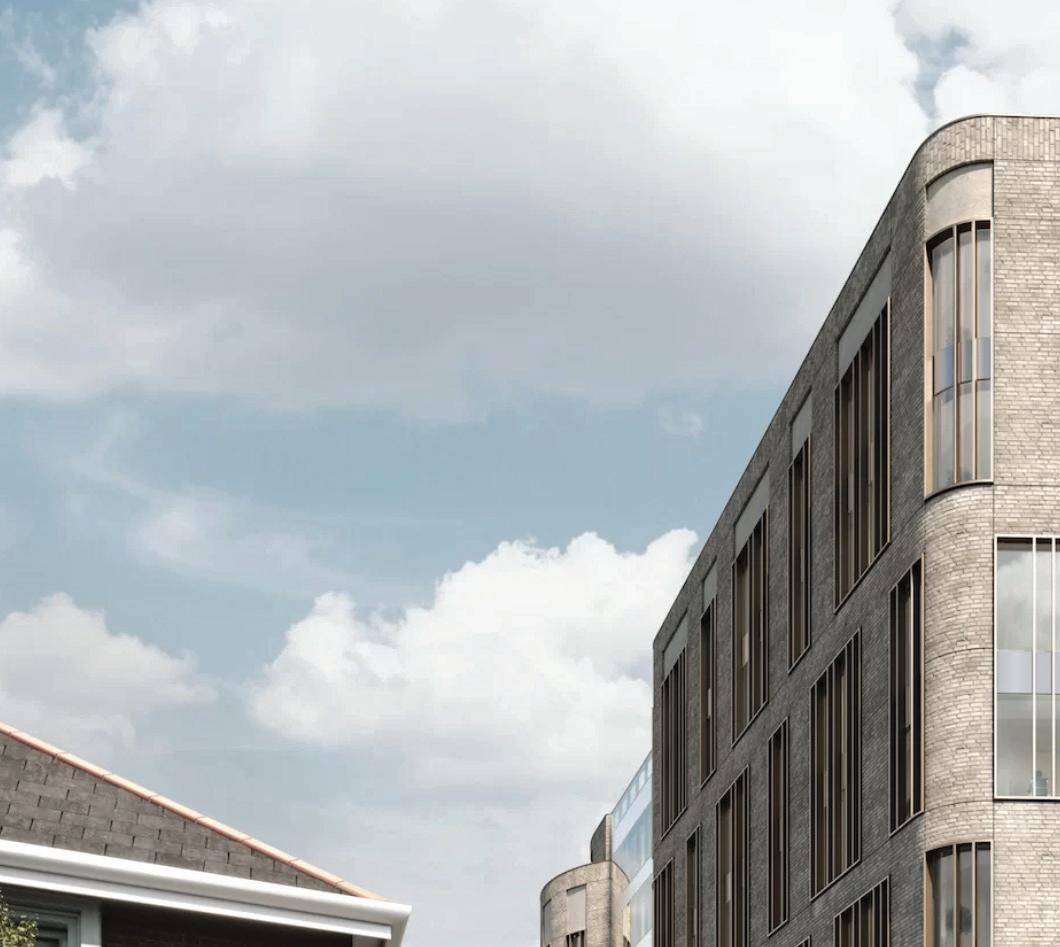


Employees in the heart of Dublin’s thriving tech hub will be able to enjoy panoramic views of the Docklands’ skyline from sustainable workspaces when a ground-breaking building opens for business. From top to bottom, The Sidings on Clanwilliam Terrace has been designed to house Ireland’s most environmentally and employee-friendly workspaces. Located in Grand Canal Dock, the office block has all the credentials to become an iconic structure when it is completed in the second quarter of next year.
It is the country’s first ‘triple-platinum’ construction project, with its eco-friendly features and focus on staff wellbeing recognised by industry leaders. On the tenth storey, there are two fully glazed penthouse floors and a large wraparound terrace with a 190-metre landscaped walkway – where workers can recharge the batteries. The ground floor has dedicated street-level access to secure parking for almost 200 bicycles, and the bike storage area also includes repair stations, clothes driers and showers, and lockers for cycling commuters.
There is also a bright and spacious glass-fronted foyer with coffee bar, where staff can relax before entering
high-speed lifts to the floors above. The cutting-edge design also includes ‘touchless’ floor spaces which operate without the need for doors on the main office access points. Natural brick and glass facades, meanwhile, enhance employee comfort by keeping temperatures stable and reducing outside glare.
The innovative building is bound to attract strong interest from blue-chip operators already established in Ireland, or tech companies eager to establish a base in one of Europe’s leading technology hubs.
“The Sidings will provide tenants with high-quality office spaces and low utility costs while helping to preserve the environment,” said Paul McGrath, Commercial Real Estate Director at the site’s developer, Bartra.
“The spacious and bright floorspaces, which range from 1,800 sqm to 2,285 sqm, have been designed to support and enhance market-leader aspirations.”
“The ceilings are high, reaching 2.8 metres on every floor,” he added.

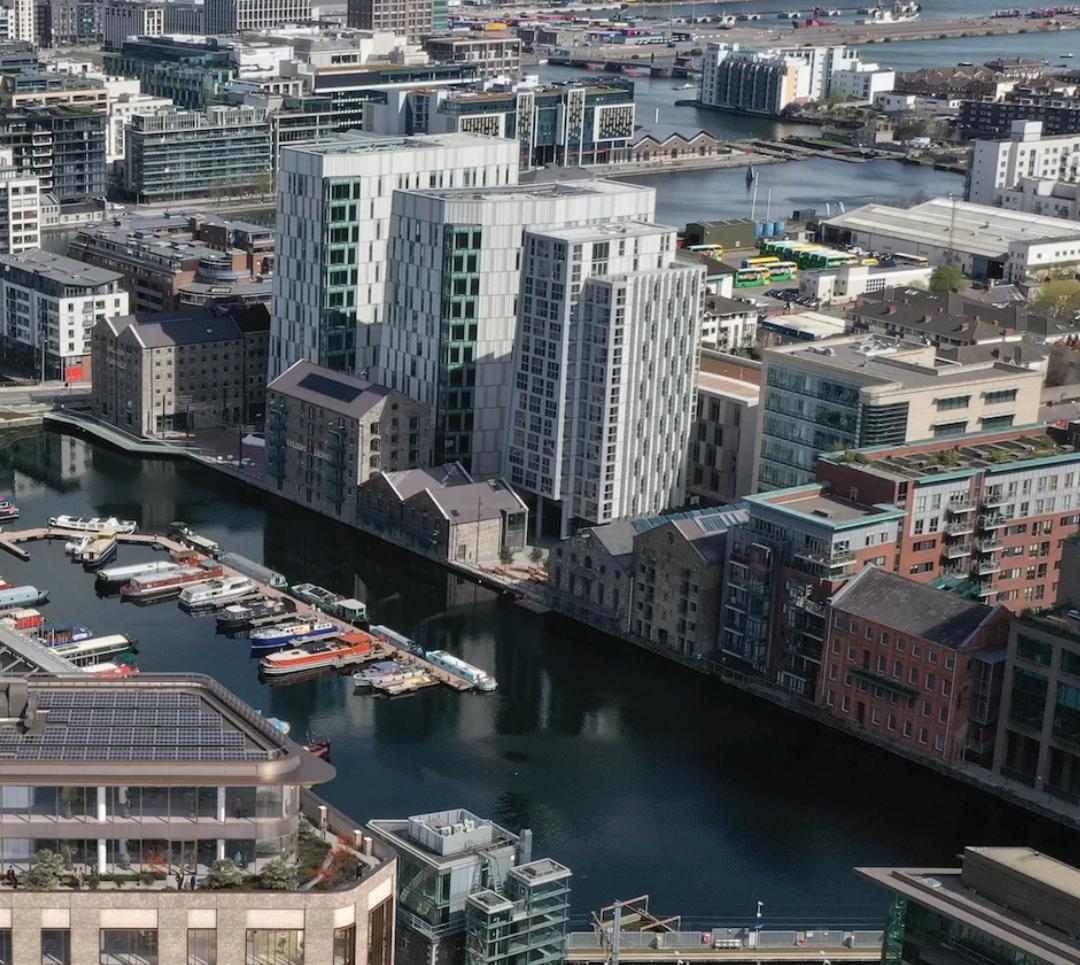

“All of the office floors have super-efficient cores, large nine-metre spans – and few if any columns, so layouts adapt with ease to accommodate growing teams.”
• Designed by Dublin-based TOT Architects, The Sidings was awarded LEED Platinum status by the US Green Building Council, a not-for-profit organisation which recognises the highest levels of green building performance.
• The building boasts impressive water-conserving fixtures, achieving an overall water usage reduction of over 50%, an overall energy saving of 43.6% over projected costs, and almost all (93%) of non-hazardous waste during the 20,000 sqm building’s construction will be recycled.
• Tech specialists WiredScore also awarded the building a prized platinum rating after assessing the quality of its wired and wireless networks.
• ActiveScore, the global leader in promoting greener ways to travel to work, made it a platinum triple after the cyclist-friendly design was given the thumbs up.
• The building has been pre-assessed for WELL certification if the tenant is interested in pursuing it.
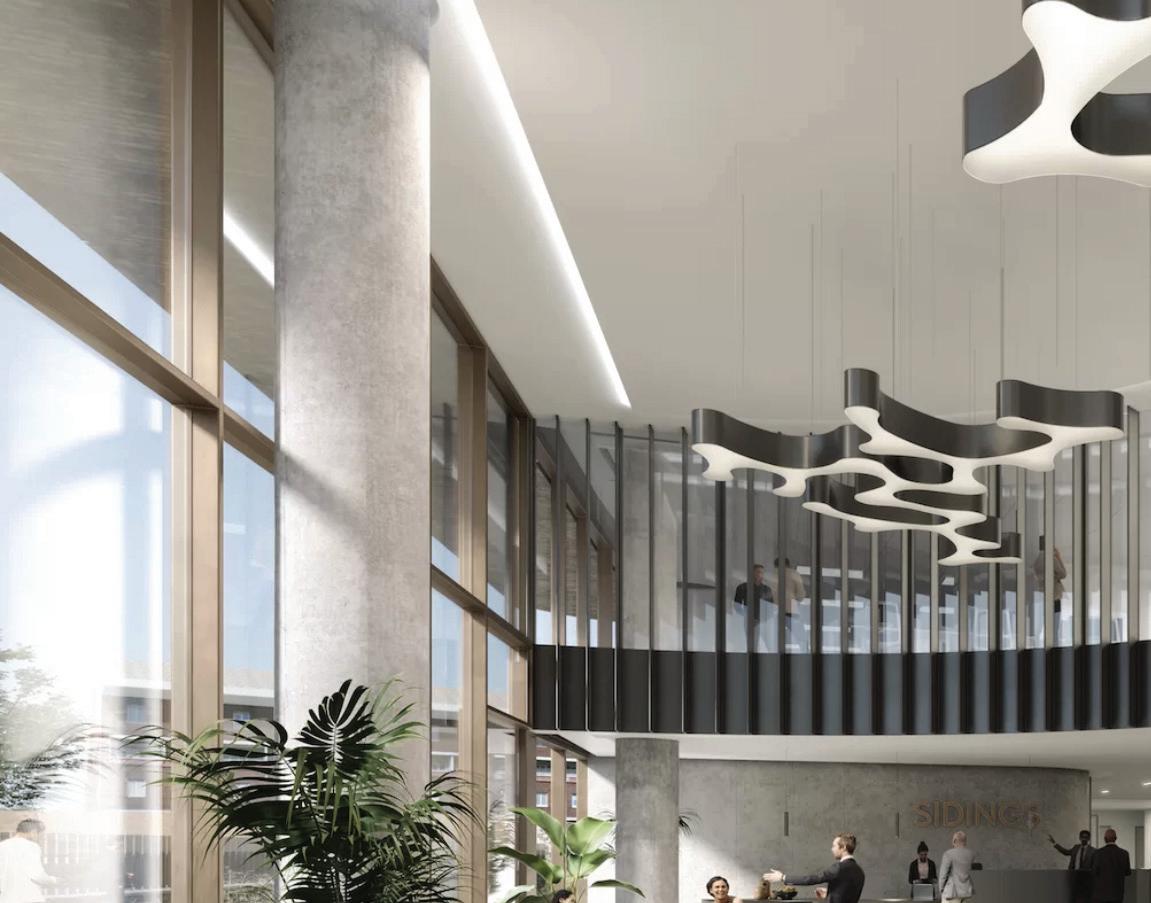

Minister for Housing, Local Government and Heritage, Darragh O’Brien TD welcomed Government approval for interim funding for the Land Development Agency (LDA) to ensure the delivery of their business plan in the short to medium term – with a total of approximately €5bn available to the agency up to 2025. The long term sustainable funding of the LDA will also be considered, as it delivers its programme of work up to 2028.
Minister O’Brien explained: “Under the LDA’s Business Plan 2024 – 2028, the agency will provide 12,900, primarily affordable cost rental, homes over the lifetime of the plan. This is a significant contribution to our overall objectives within Housing for All.
“This emphasis on delivering social and affordable housing means that there has been a significant change in the scale and remit of the LDA – limiting the agency’s ability to access private debt finance and use revenue from private housing developed to subsidise other elements of its portfolio.
“This Government is determined that the LDA is fully funded to play its full part in delivering much needed affordable and social homes under Housing for All. Only last week, the agency announced that it had started on the development of almost 220 affordable and social homes at the former Devoy Barracks in Naas, Co Kildare. This week the LDA announced that it has completed the purchase of lands in Clongriffin in north Dublin with planning permission for over 1,800 homes and the potential to deliver a total of over 2,300 affordable and social units. Today’s decision will give the agency the reassurance it needs to maintain this momentum.”
Amongst considerations, the Government decided to:
• commit a further €1.25 billion from the Ireland Strategic Investment Fund for share equity in the Land Development Agency as required;
• agree to securing additional funding sources for a further €1.25 billion in funding for the LDA;
• further develop and agree options for the sustainable future funding of the LDA in 2024.
This additional funding, combined with the funding already allowed for under legislation (€2.5bn), means that the LDA may make funding commitments of up to €5bn, which should enable the agency to deliver into 2025 while longer term funding is developed and agreed.
Meanwhile, the Government also decided to approve an increase in the borrowing limit of the Housing Finance Agency.
Minister O’Brien explained:
“My Department will now move to legislate to increase the borrowing limit of the agency from €10b to €12bn. We are now delivering homes at a rate not seen since the crash and the Housing Finance Agency has a crucial role to play in sustaining this momentum – particularly in funding projects from approved housing bodies which have been so effective in delivering social housing.”
This decision is in keeping with Housing for All (Action 18.5) which requires the Department to increase the borrowing capacity of the Housing Finance Agency to support the local government sector in land acquisition and the delivery of social and affordable homes.
